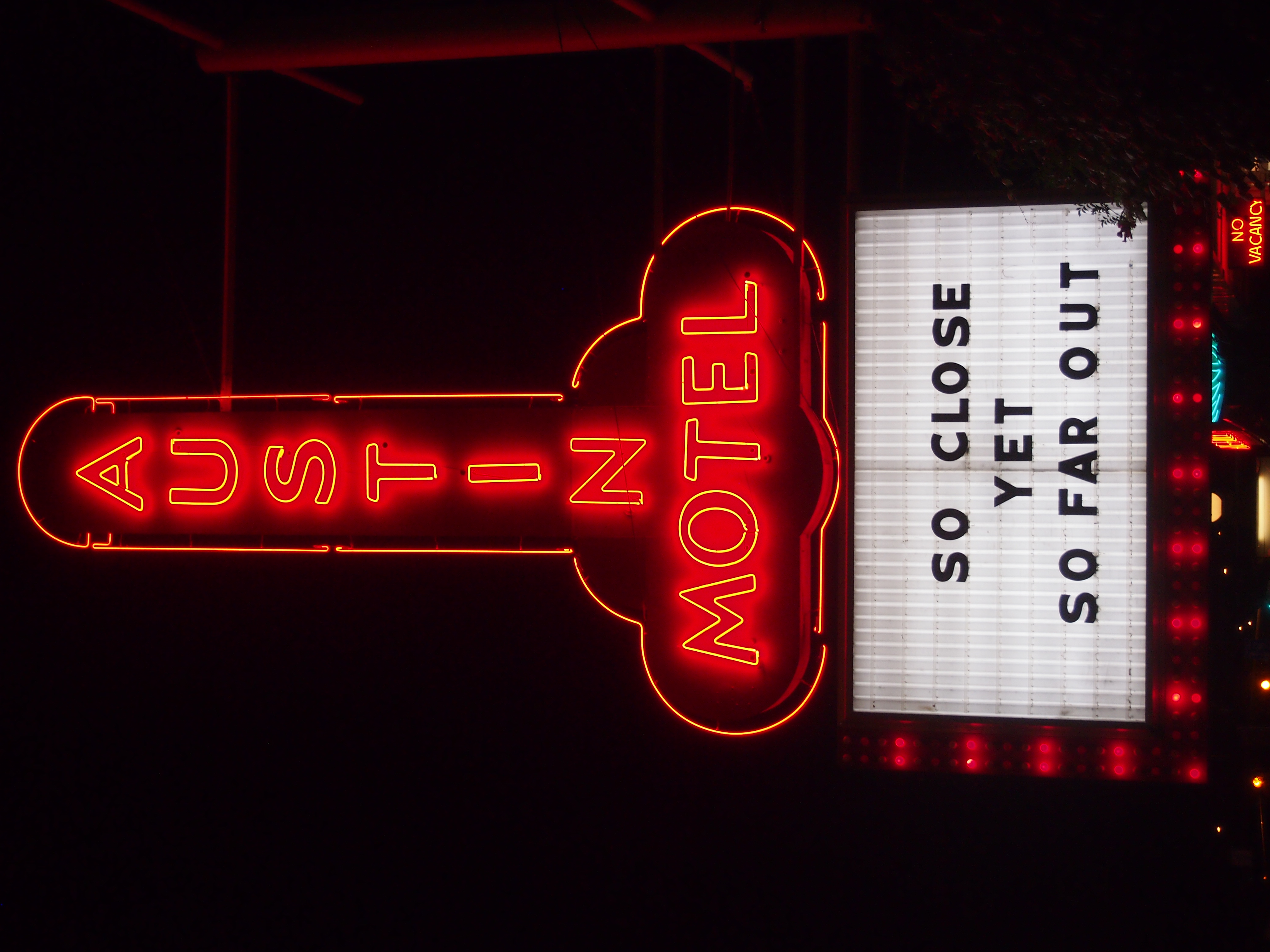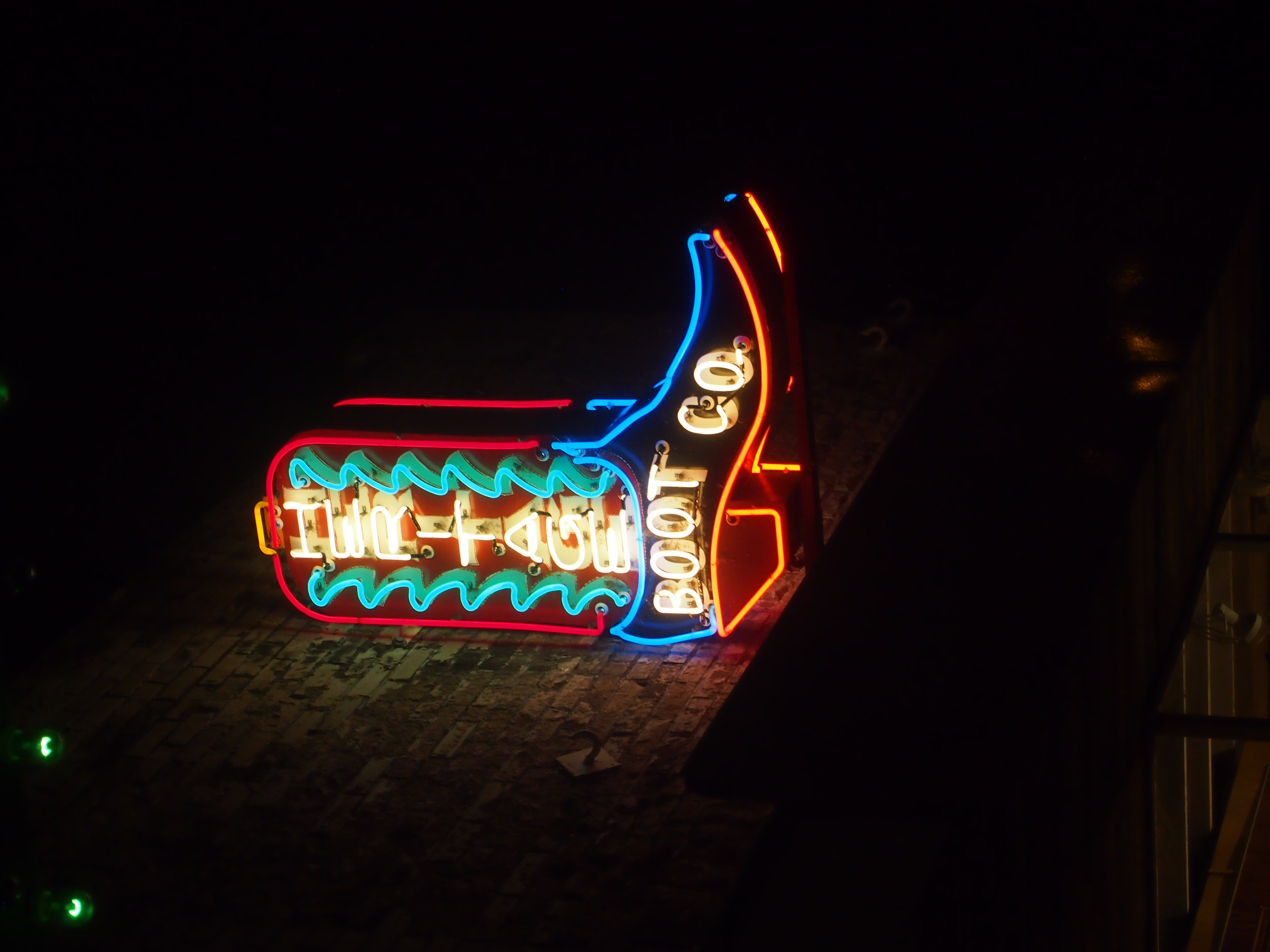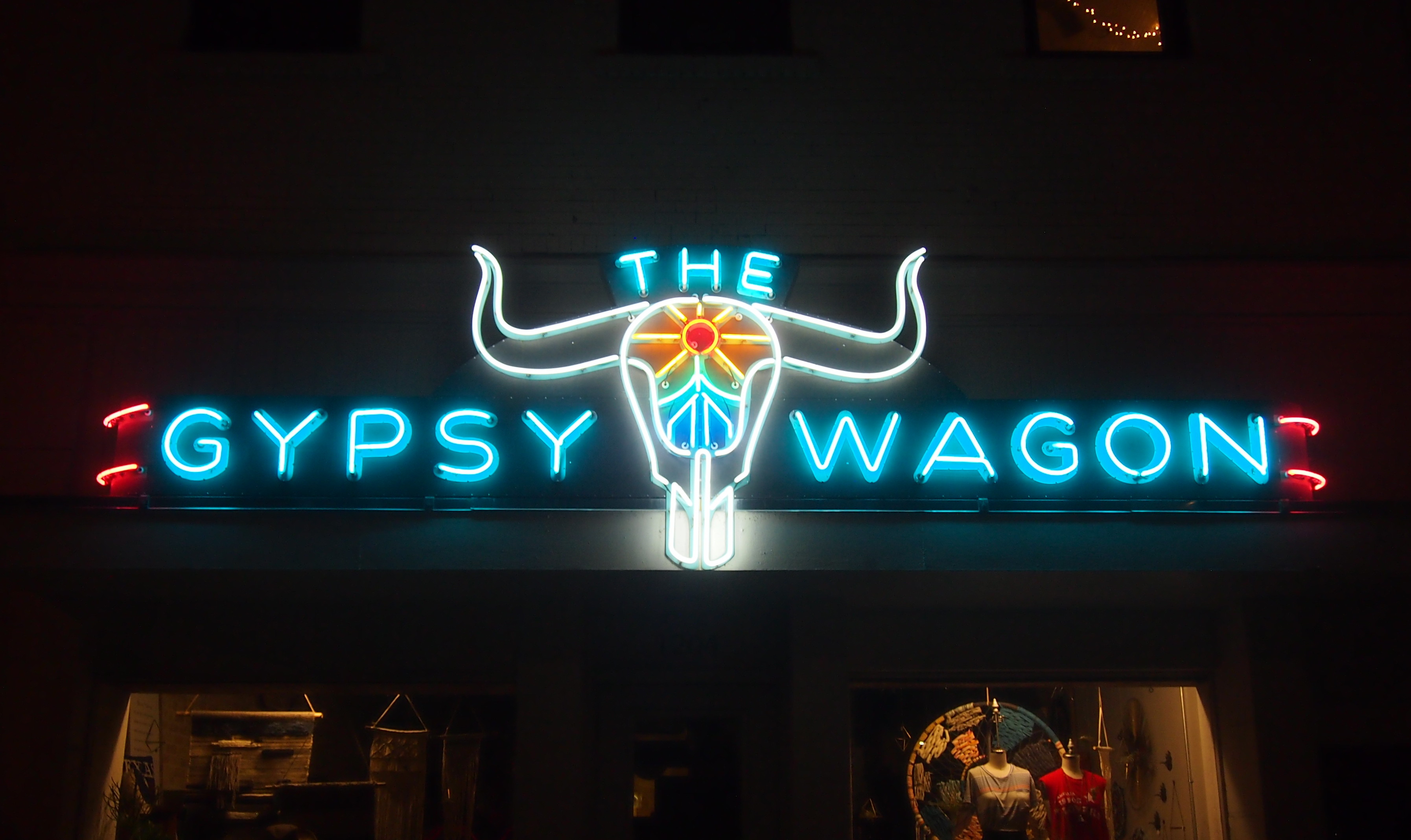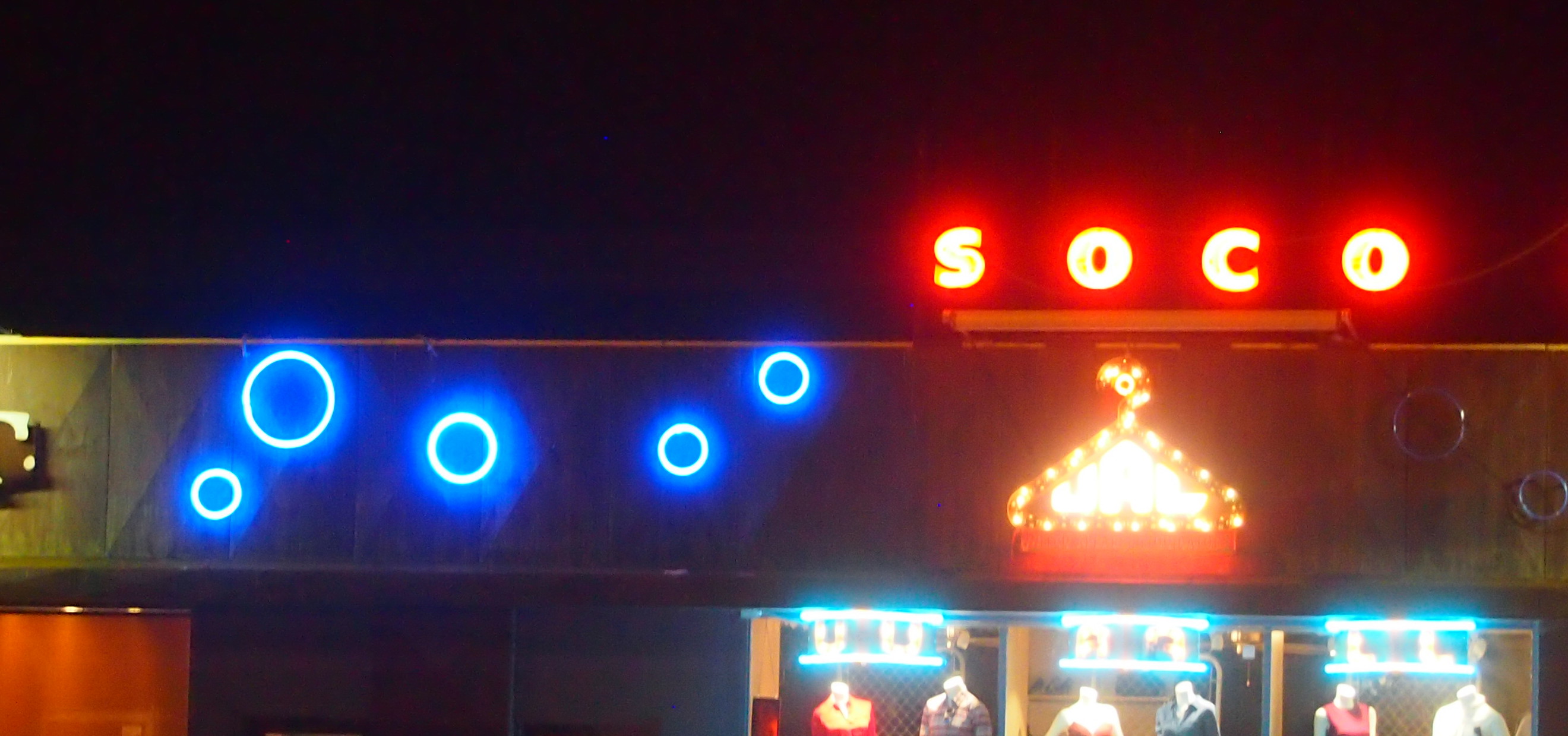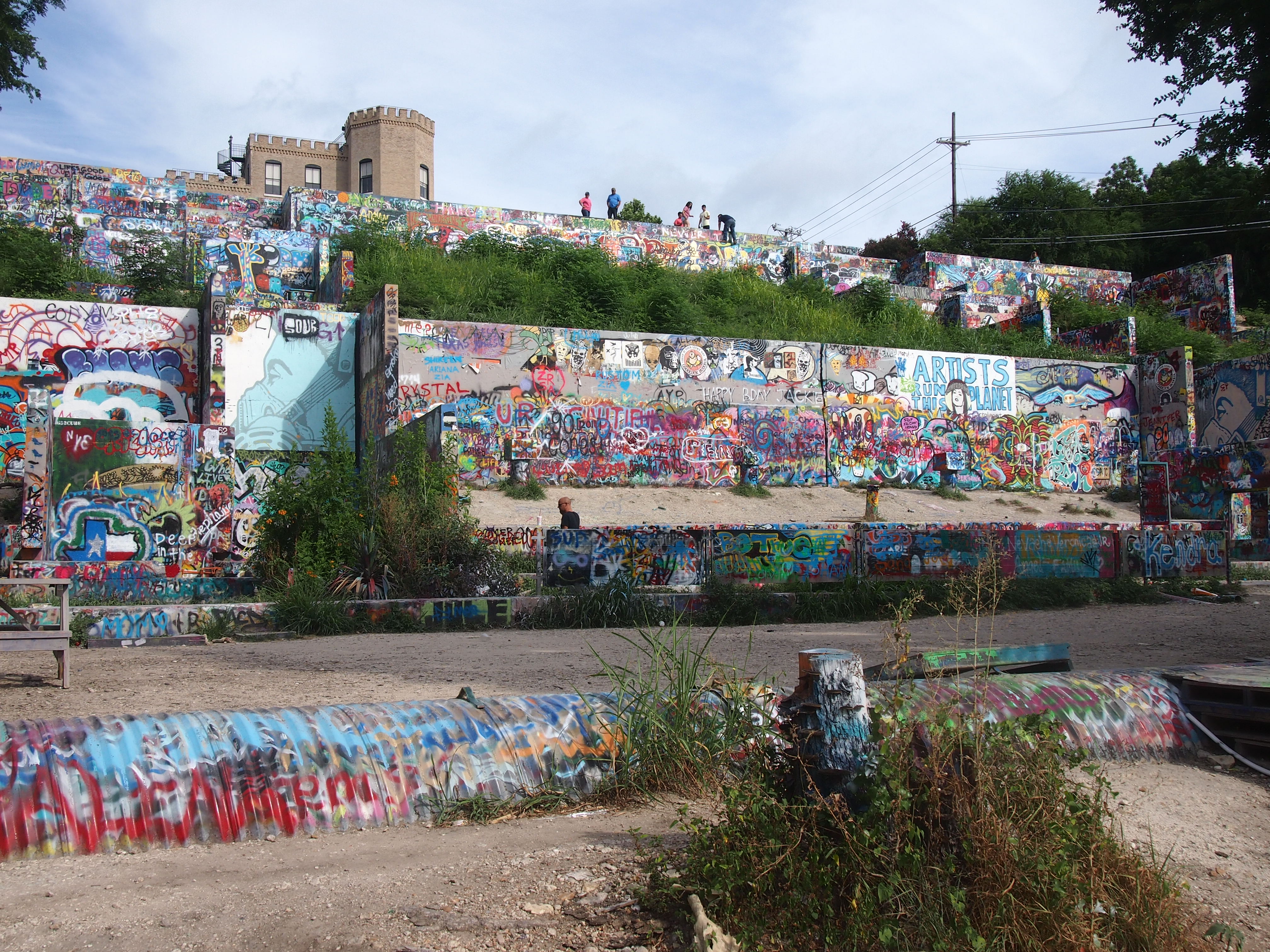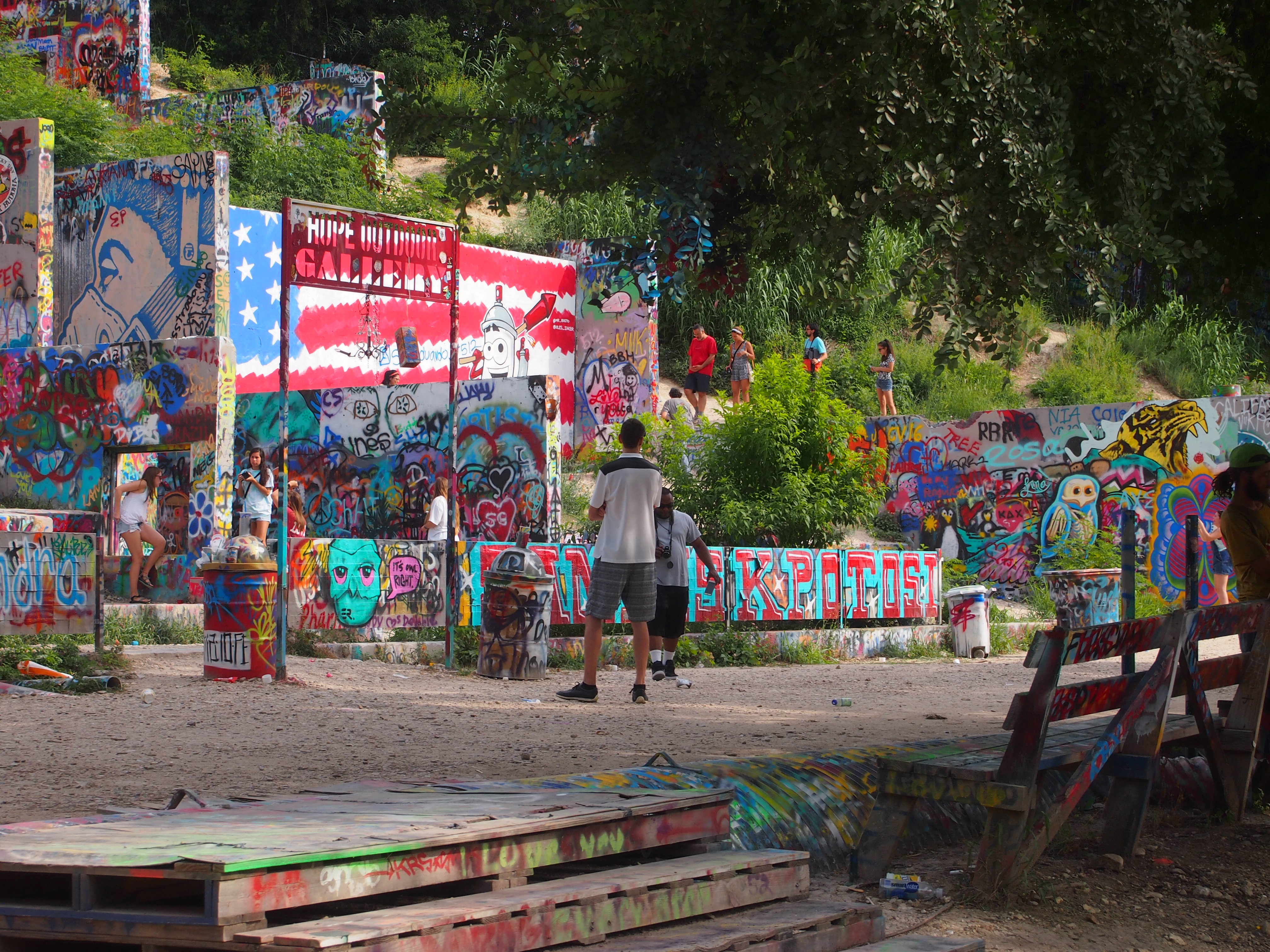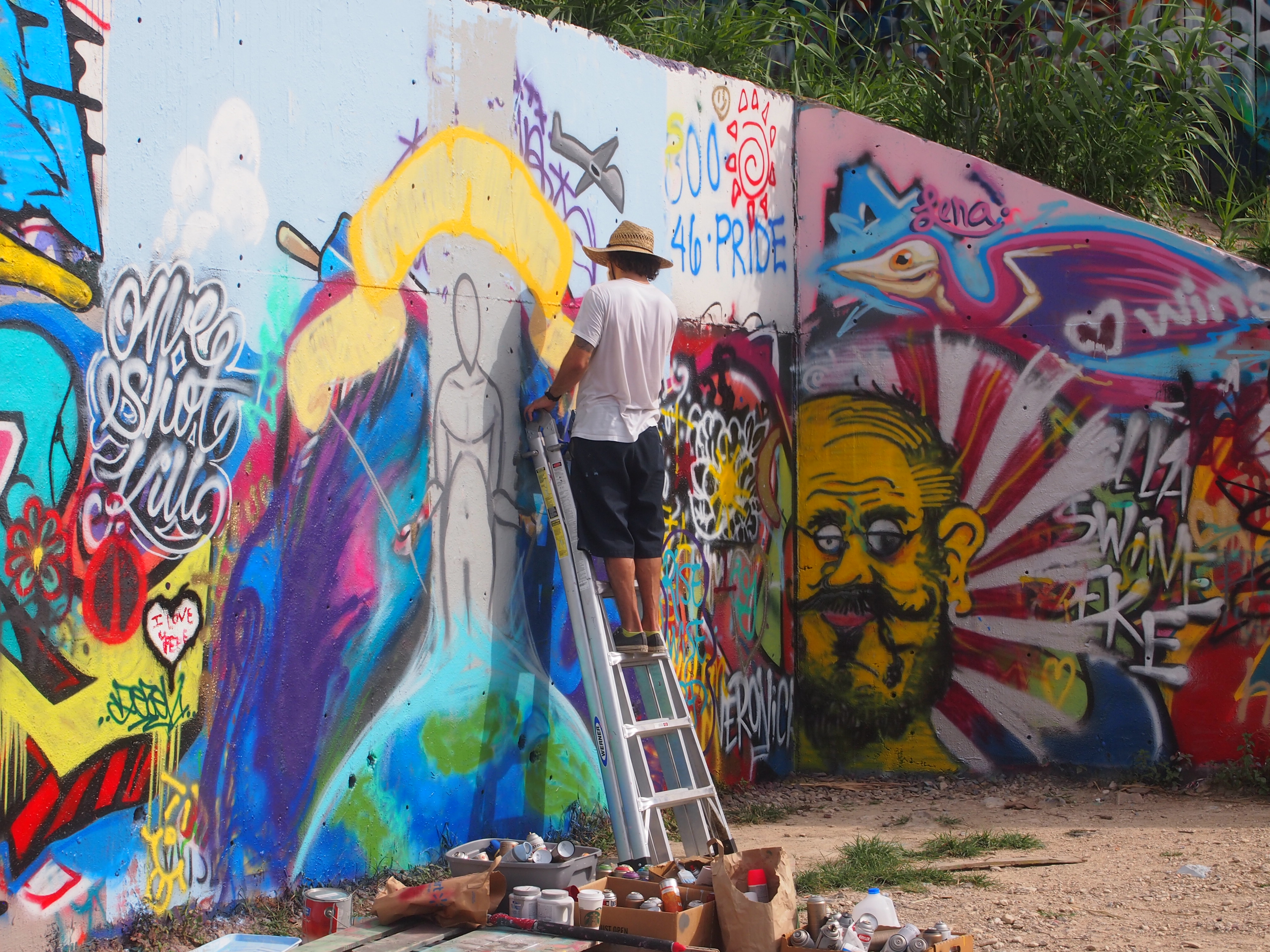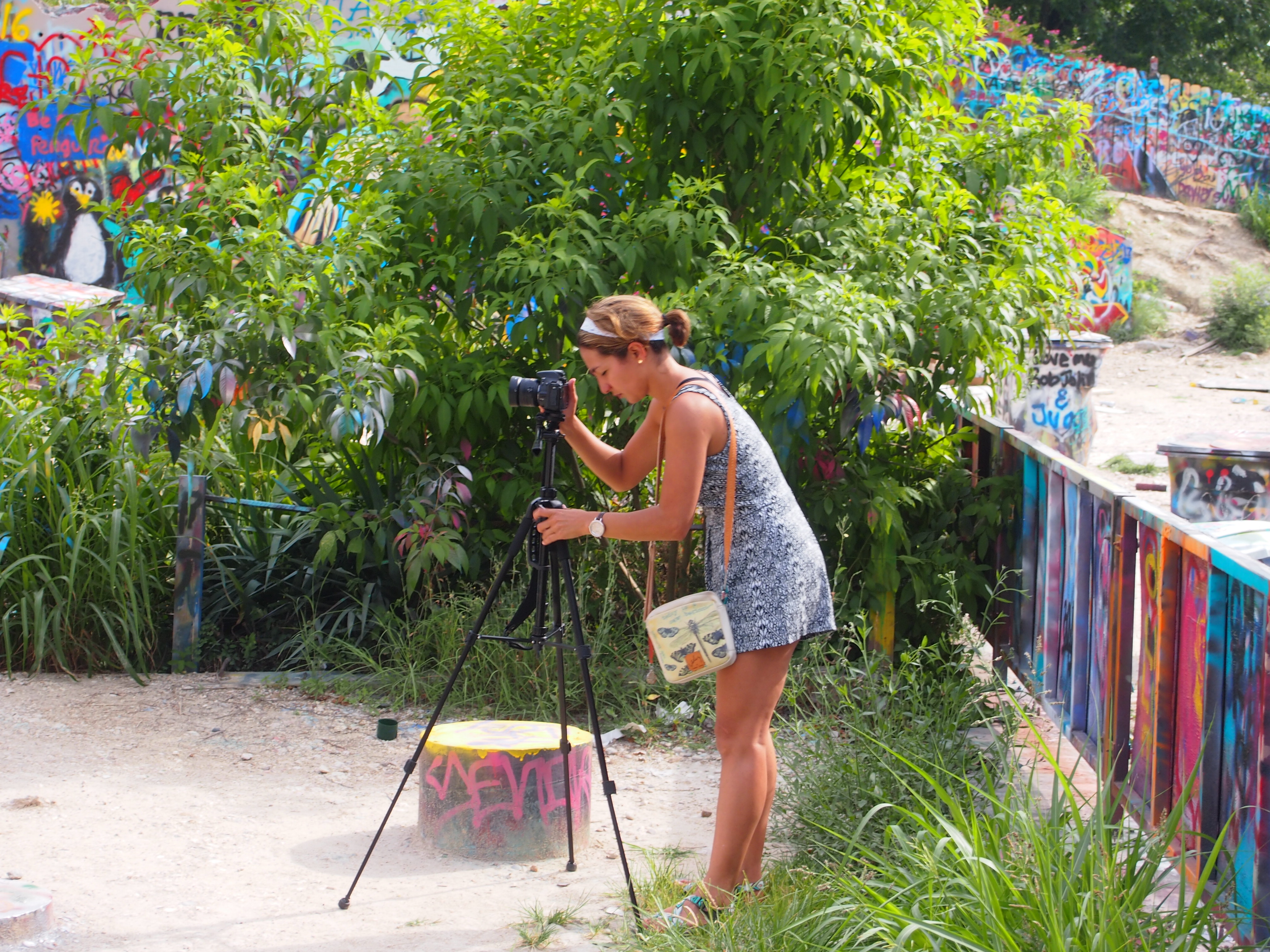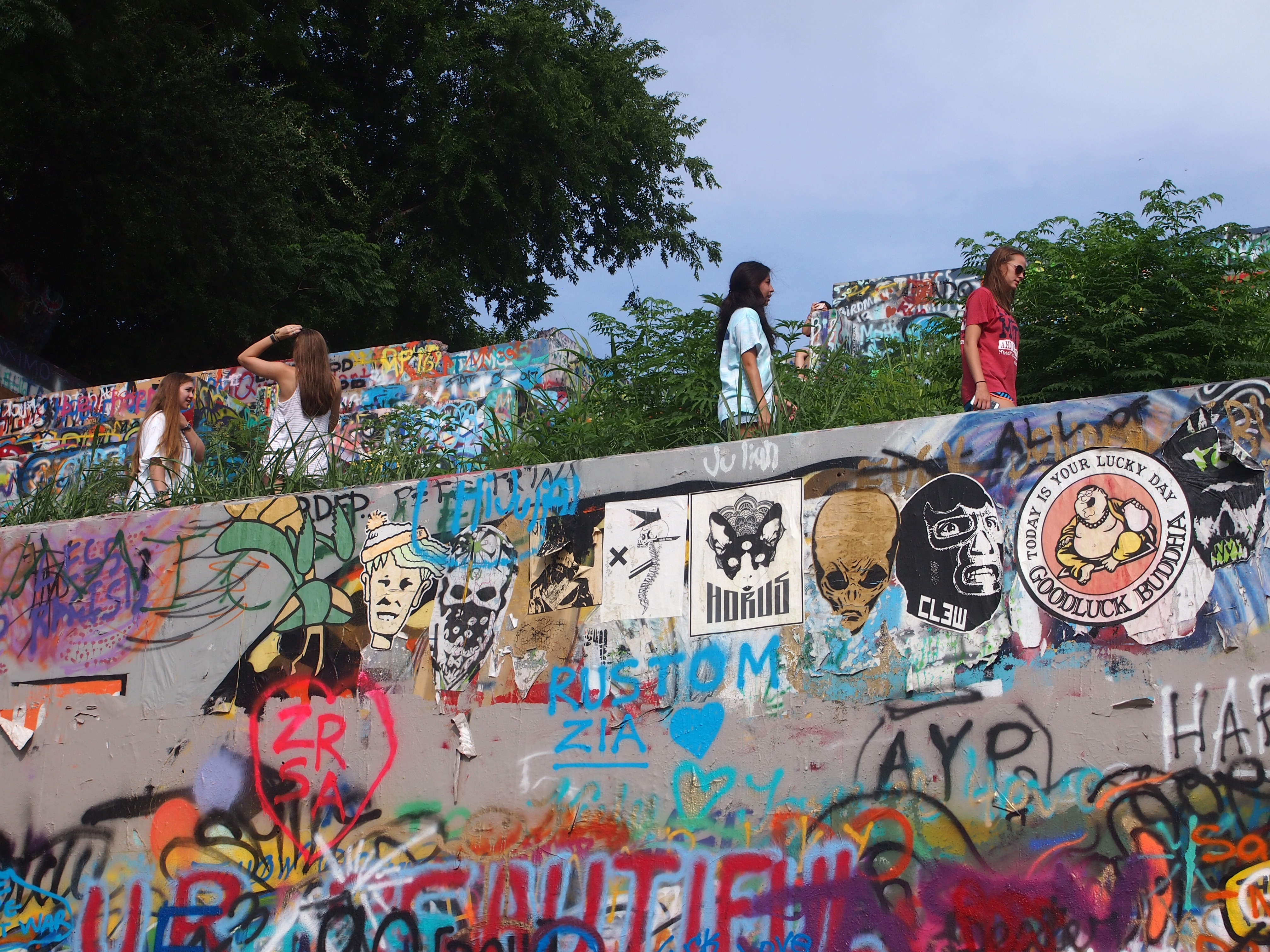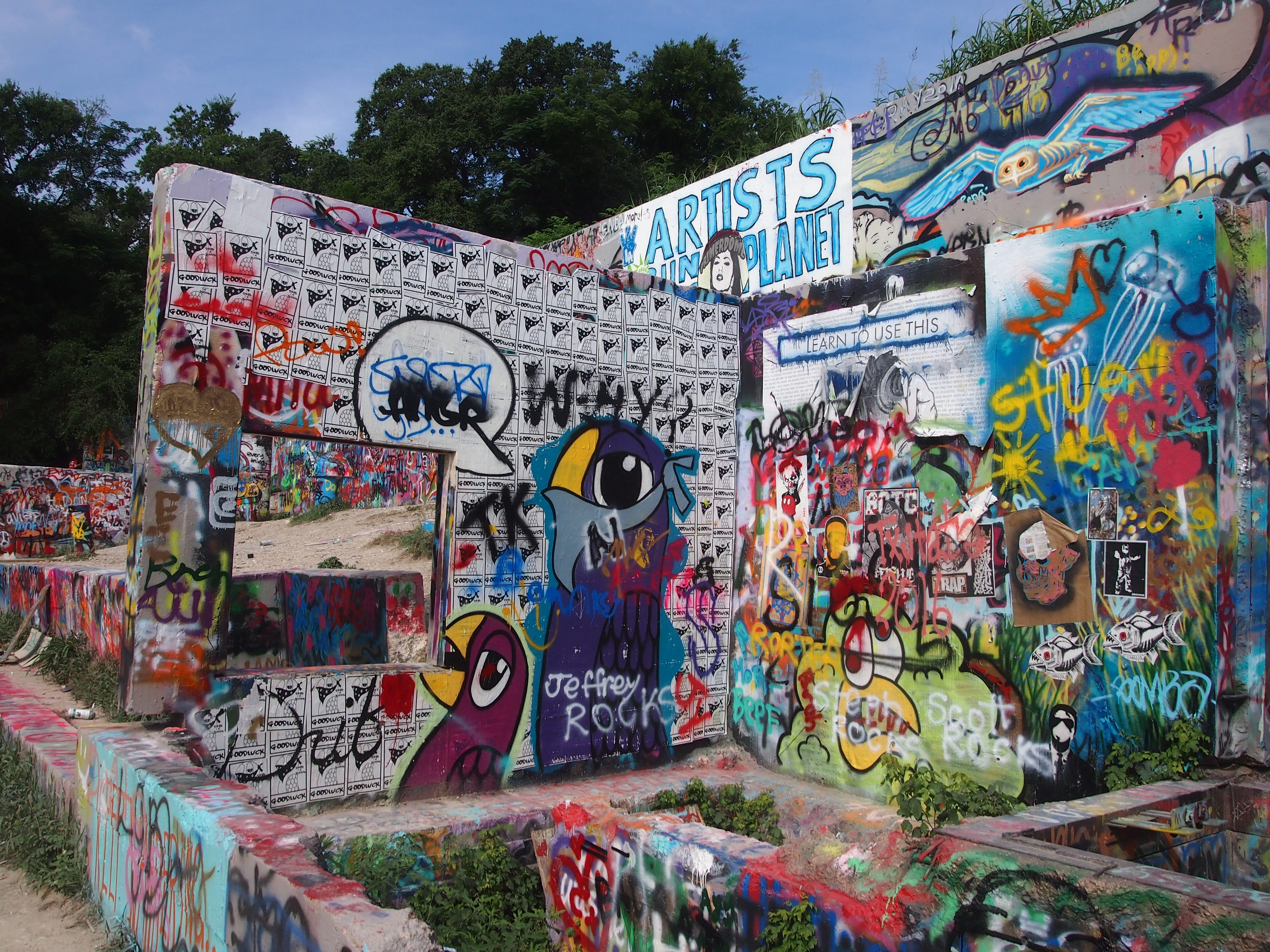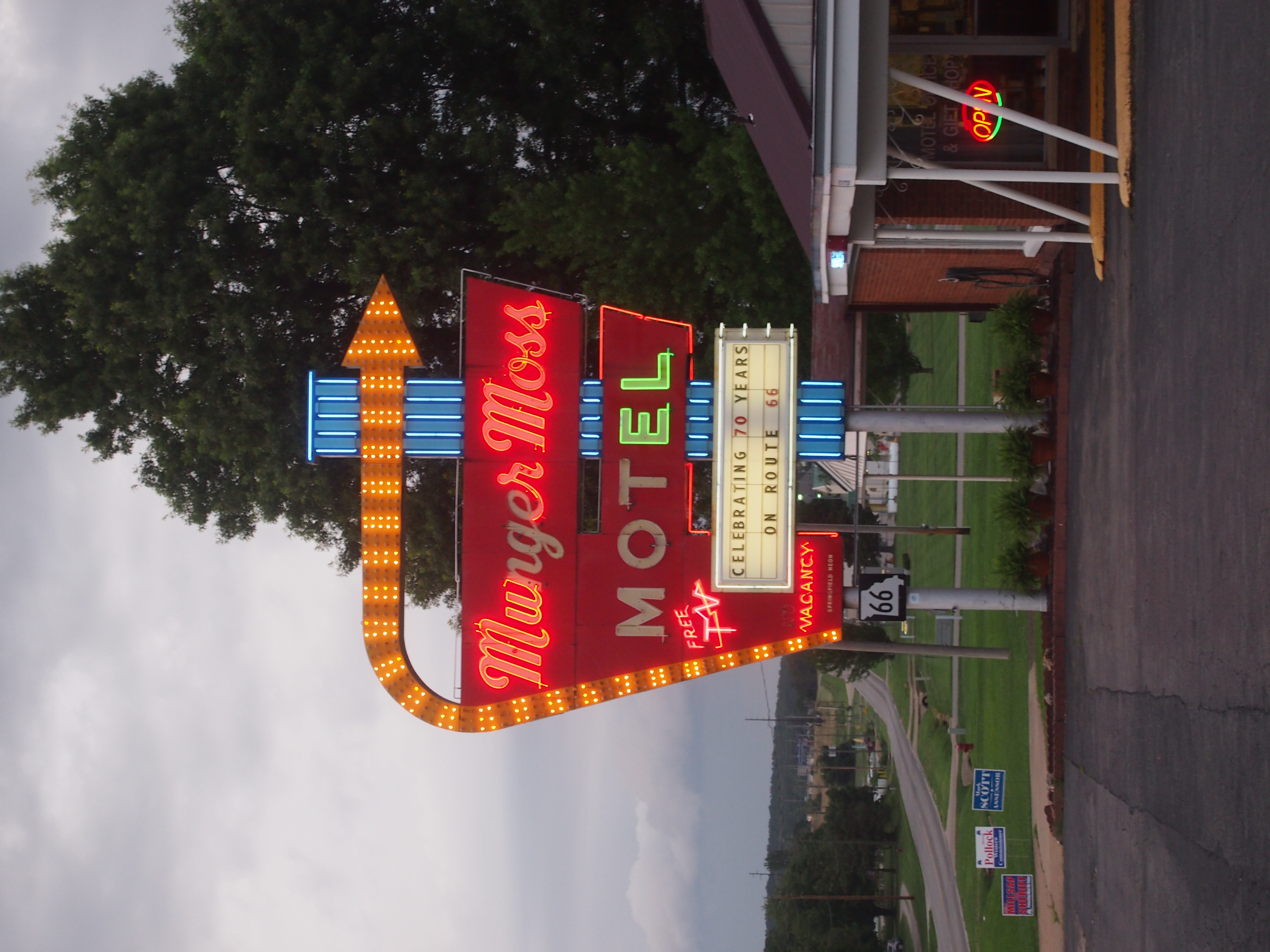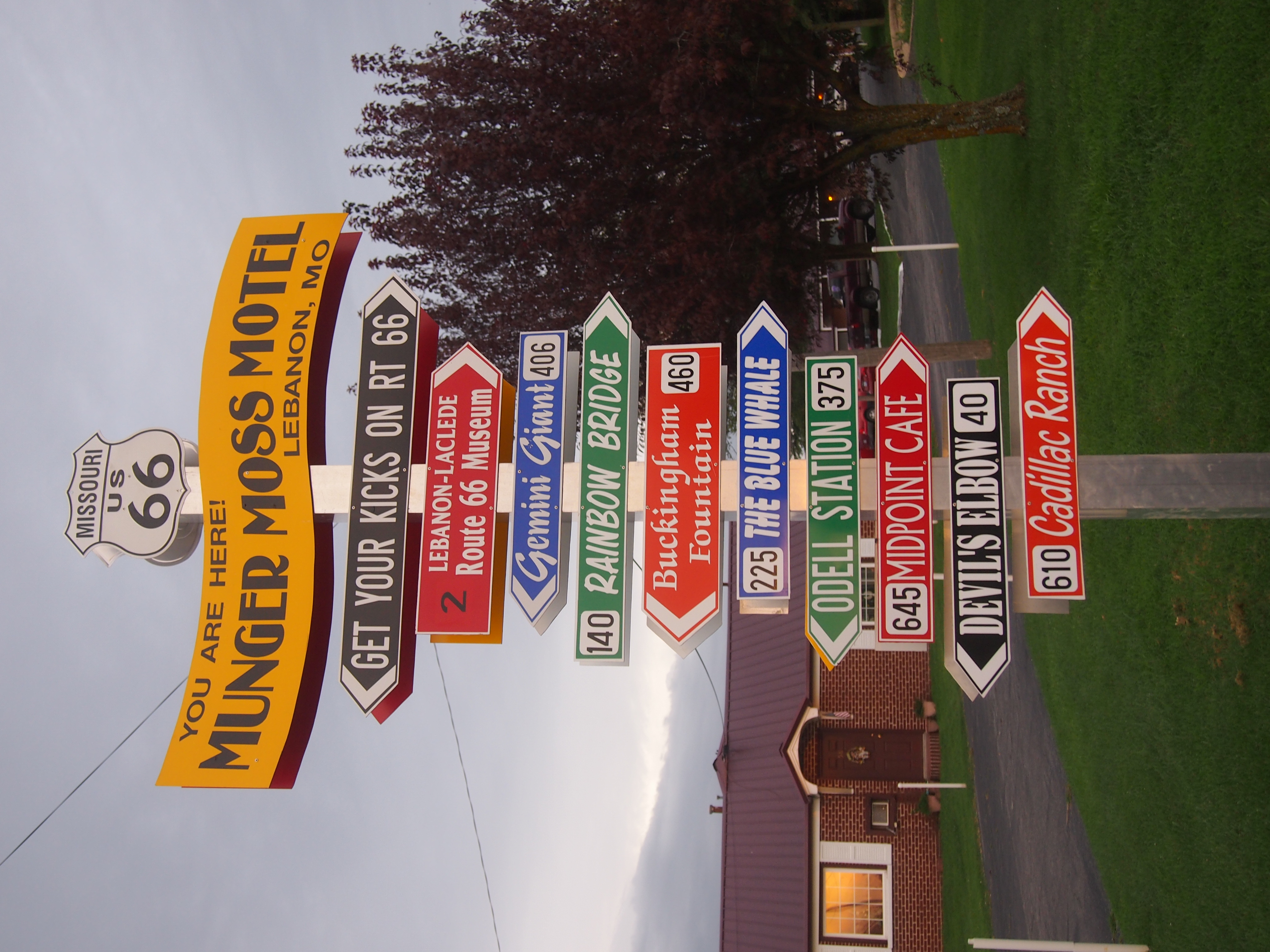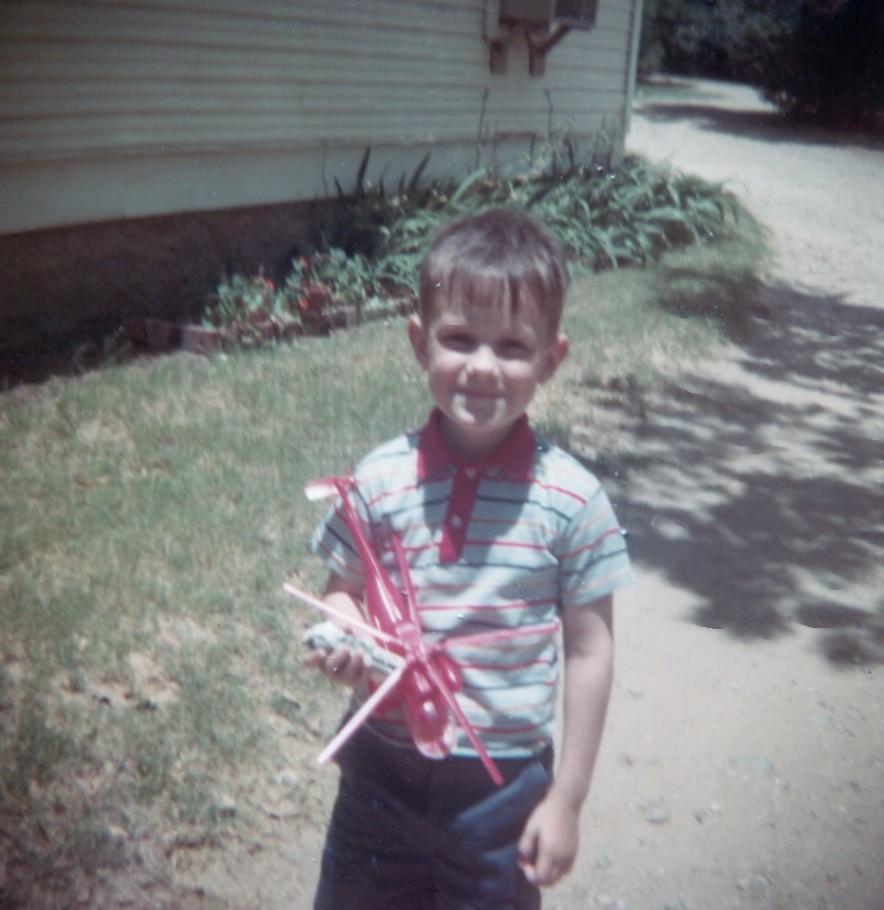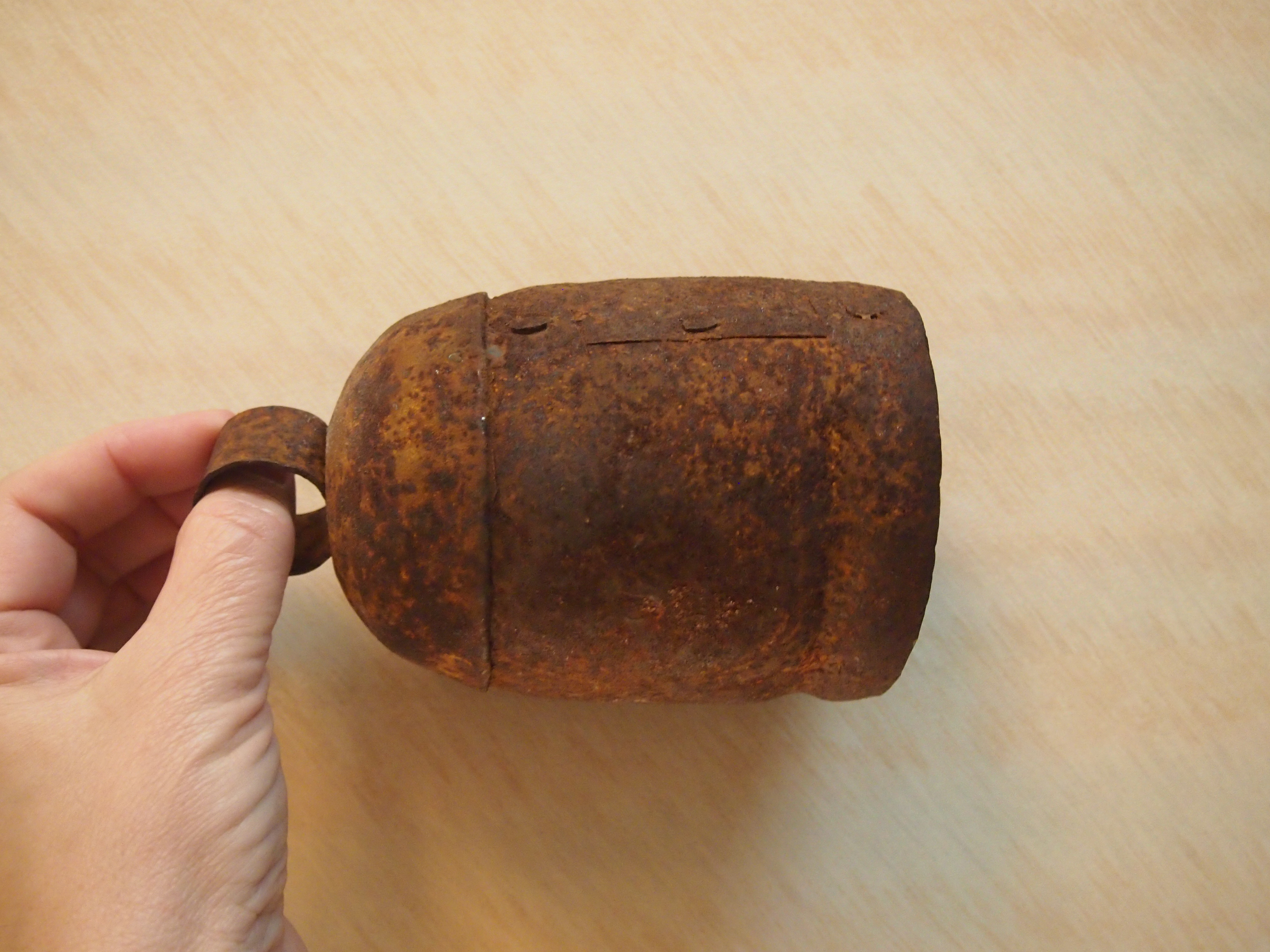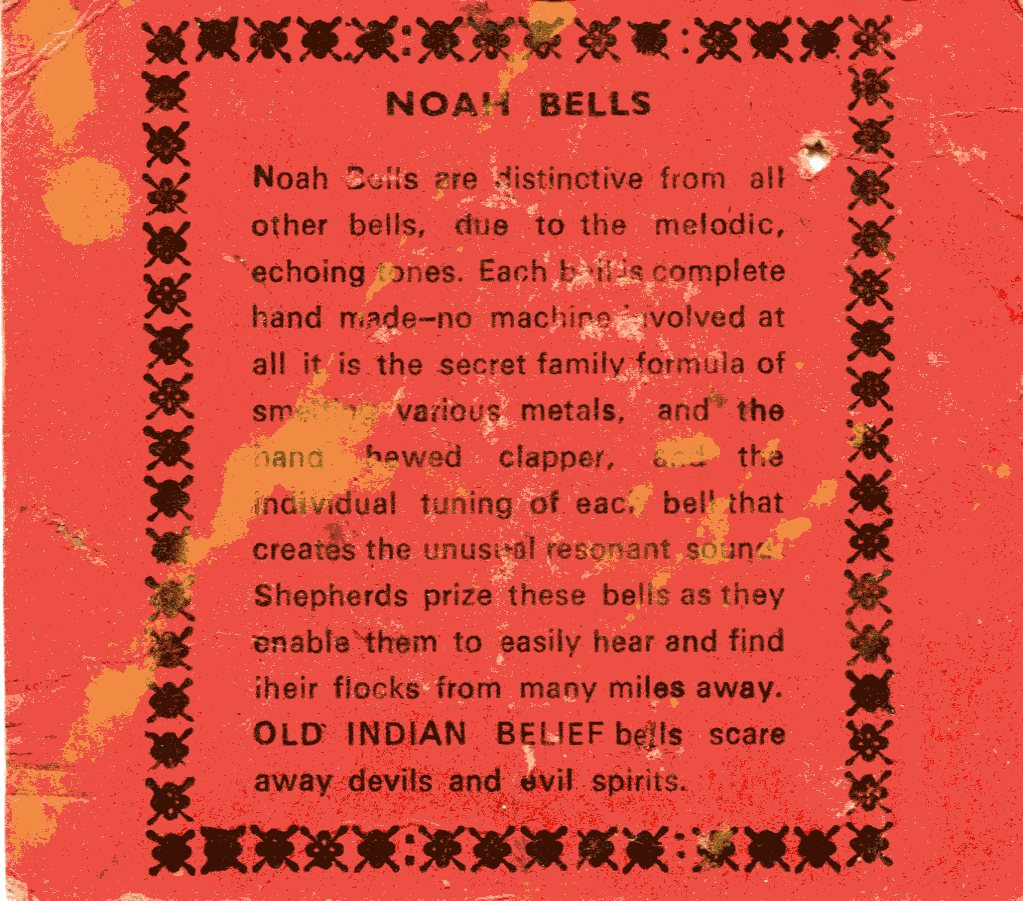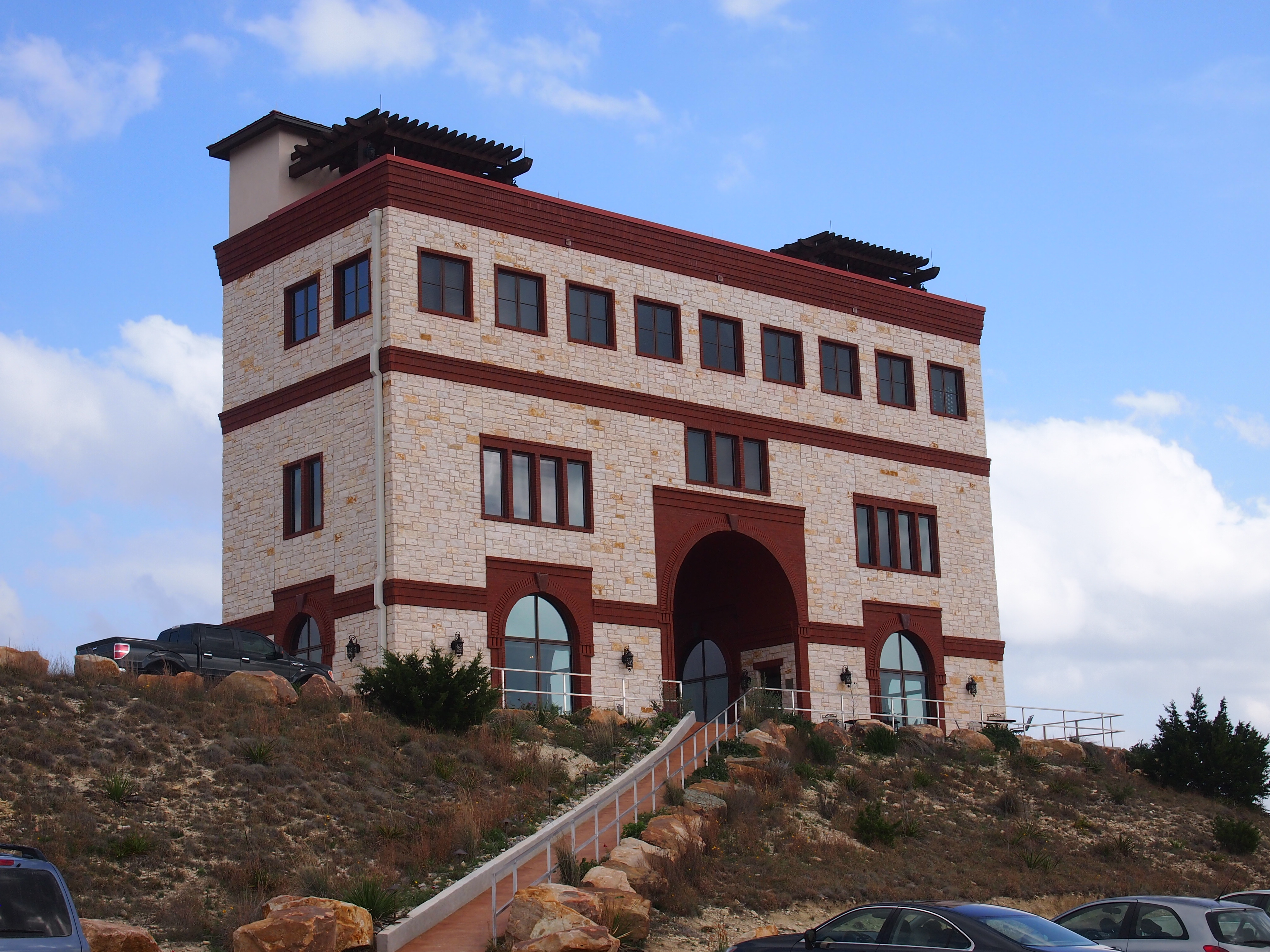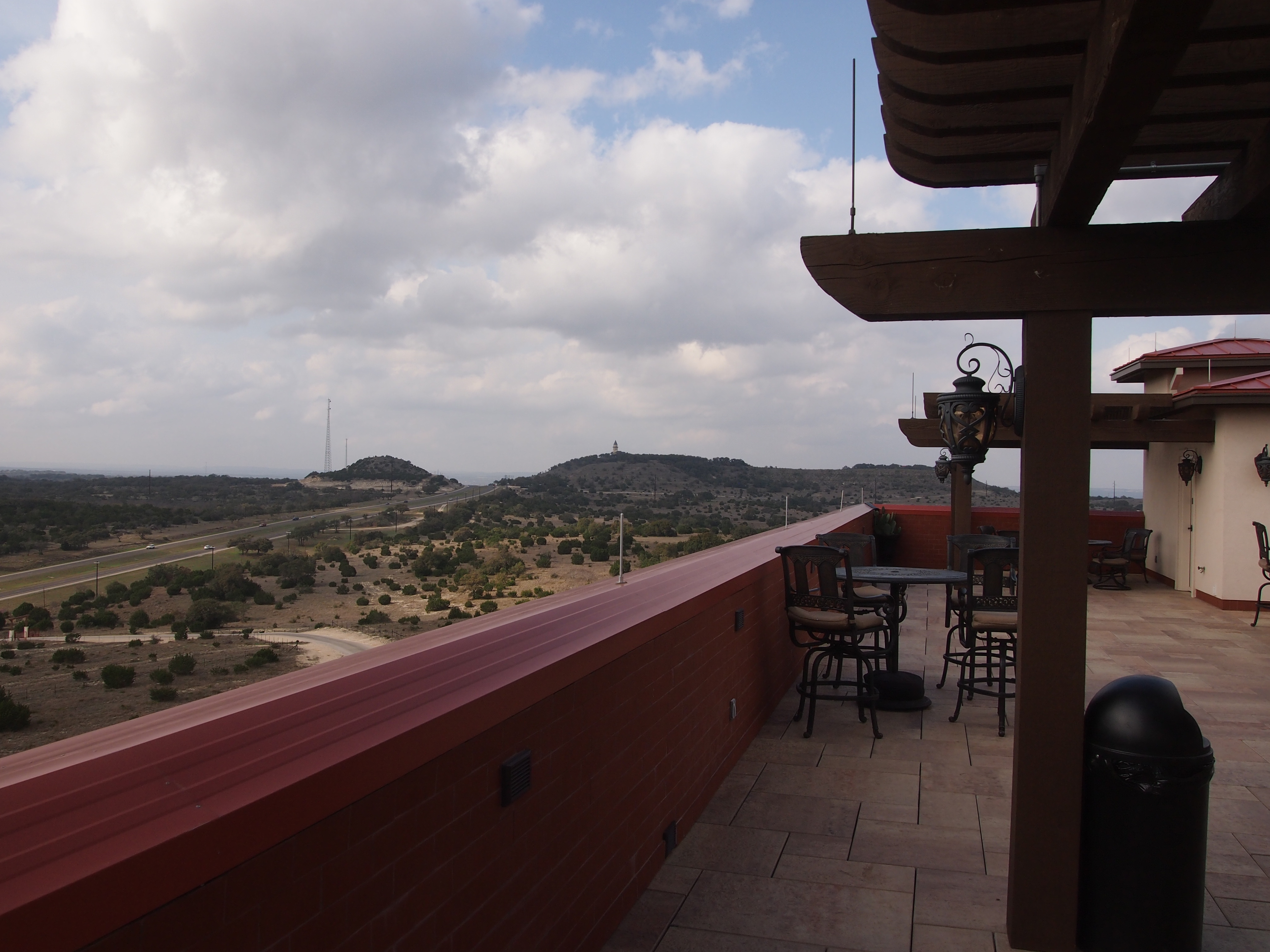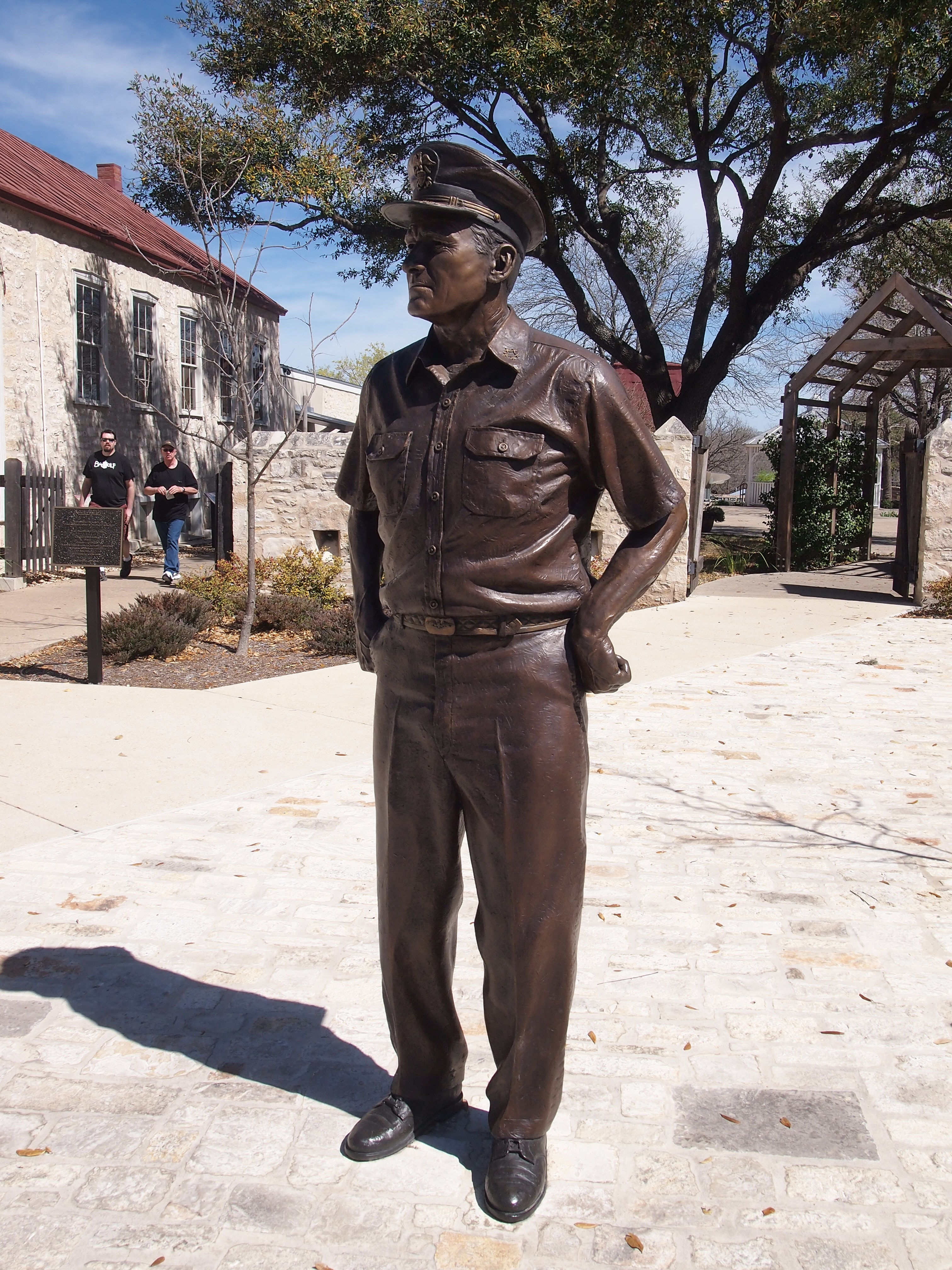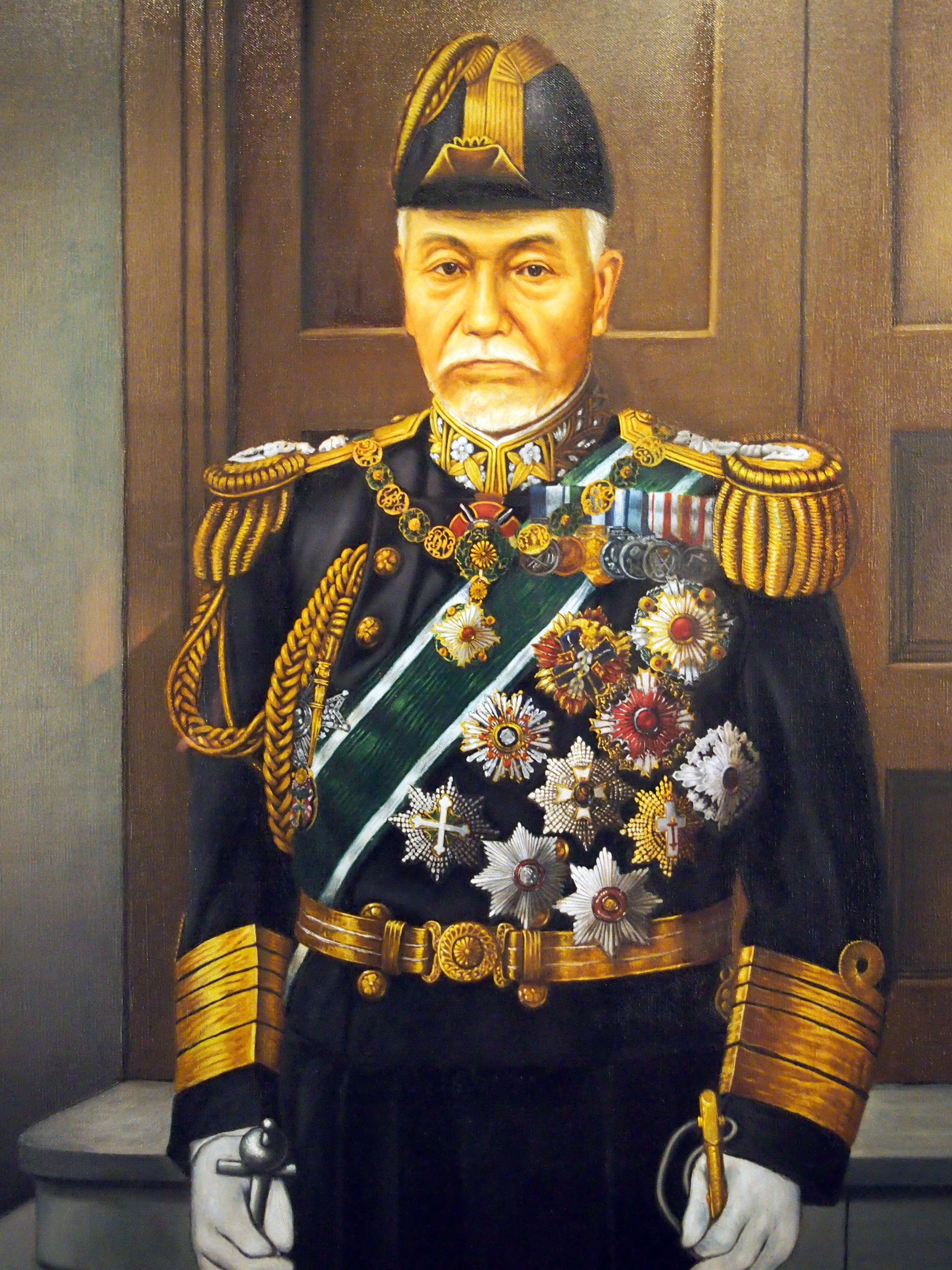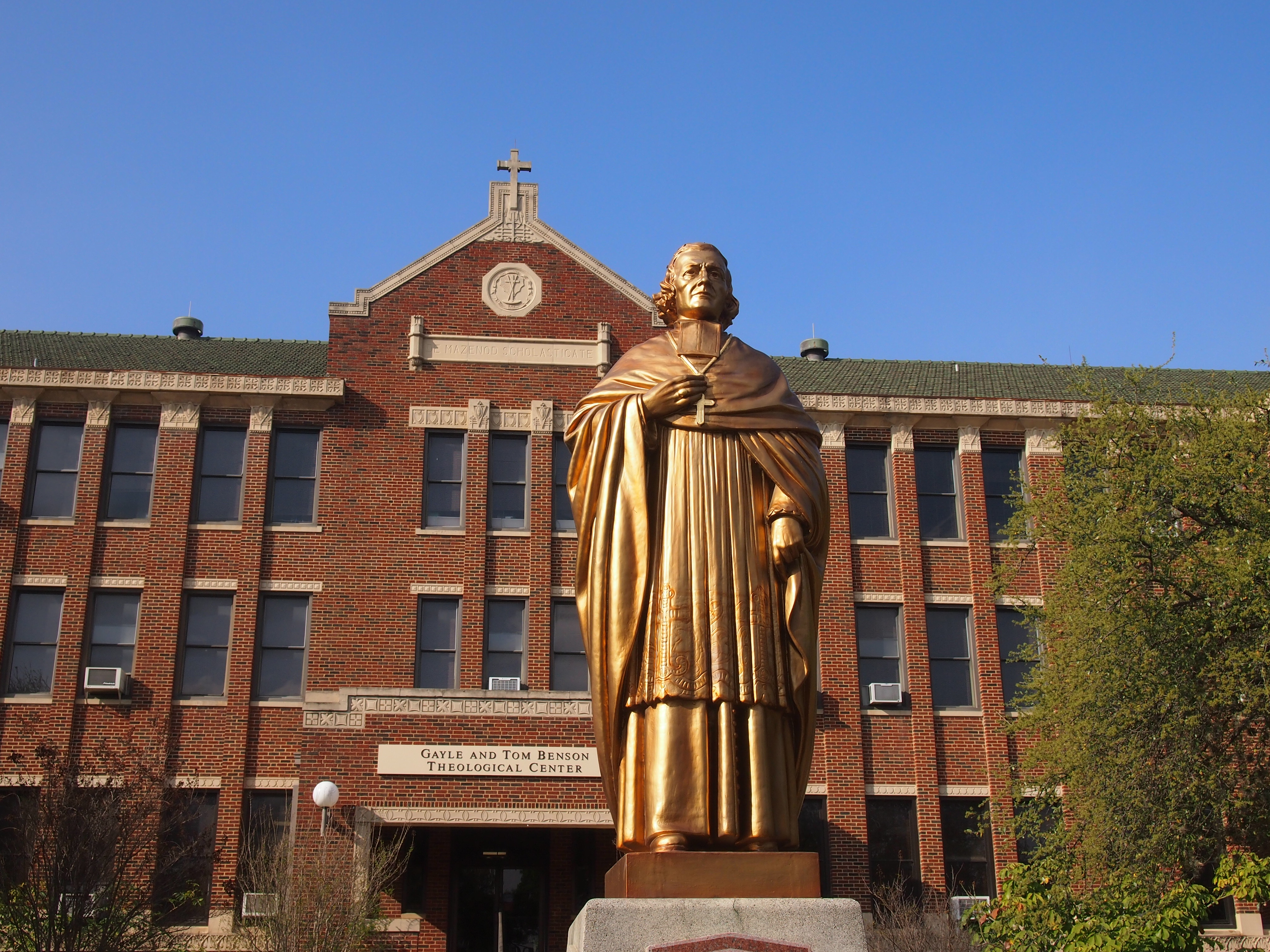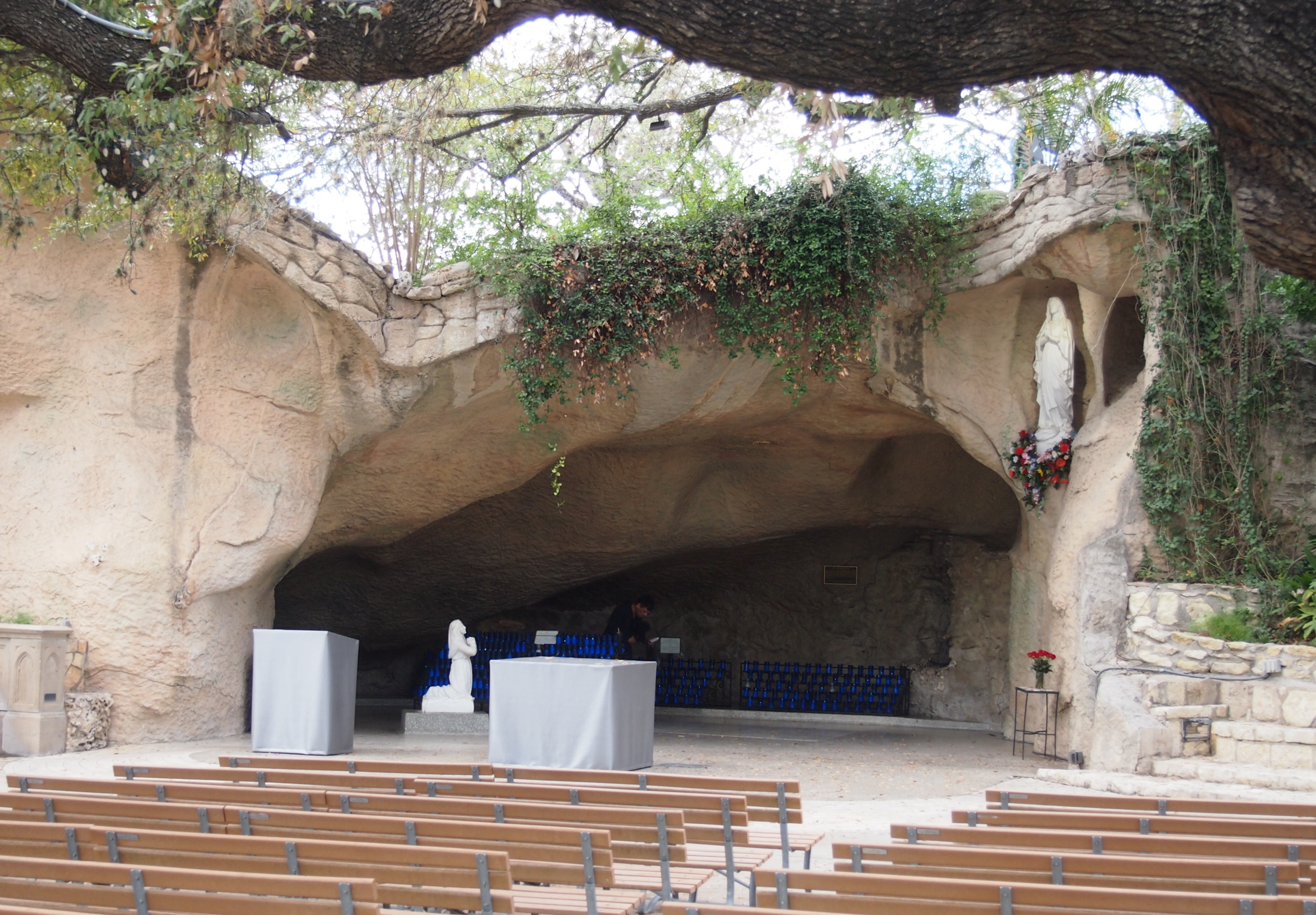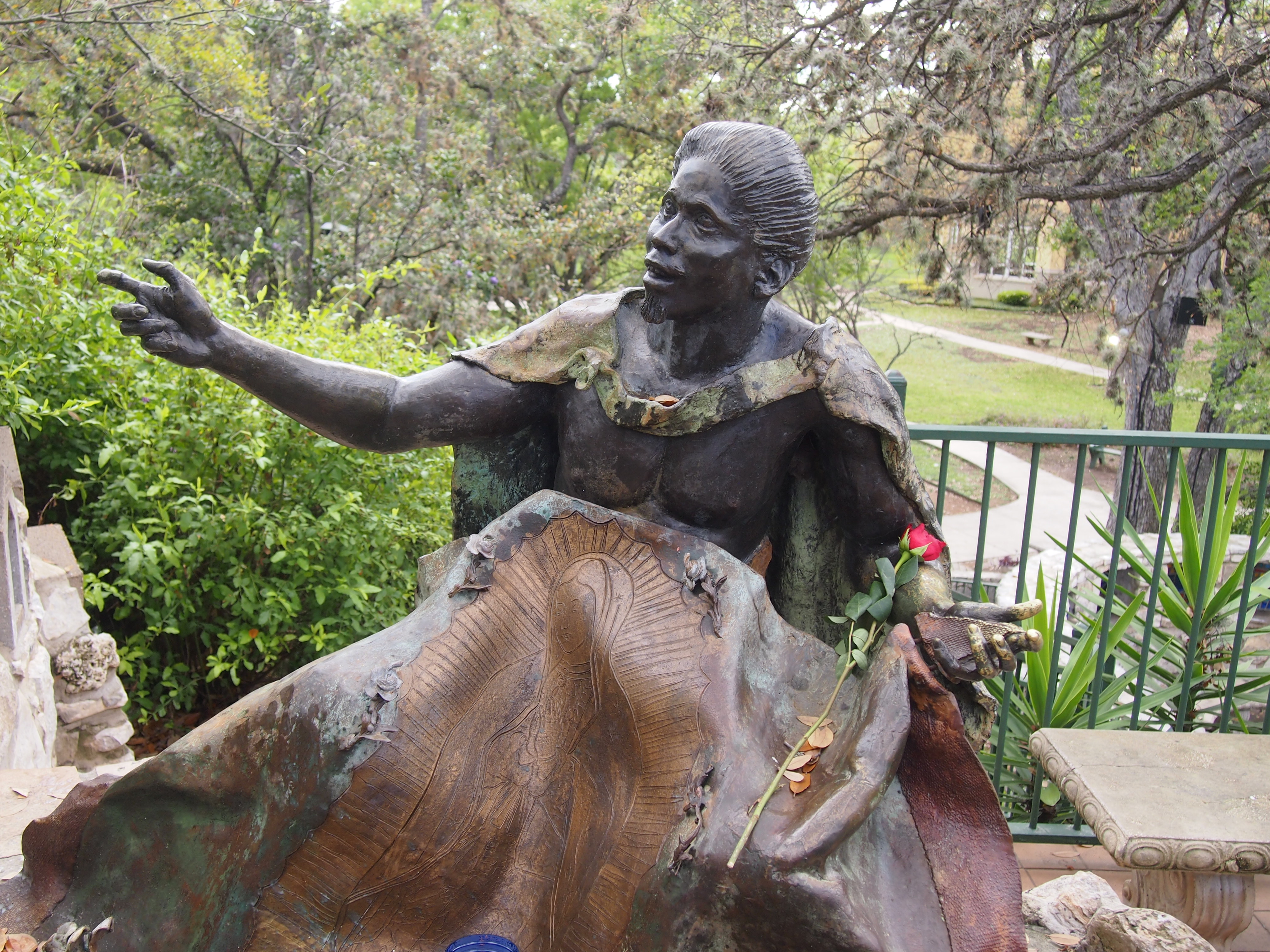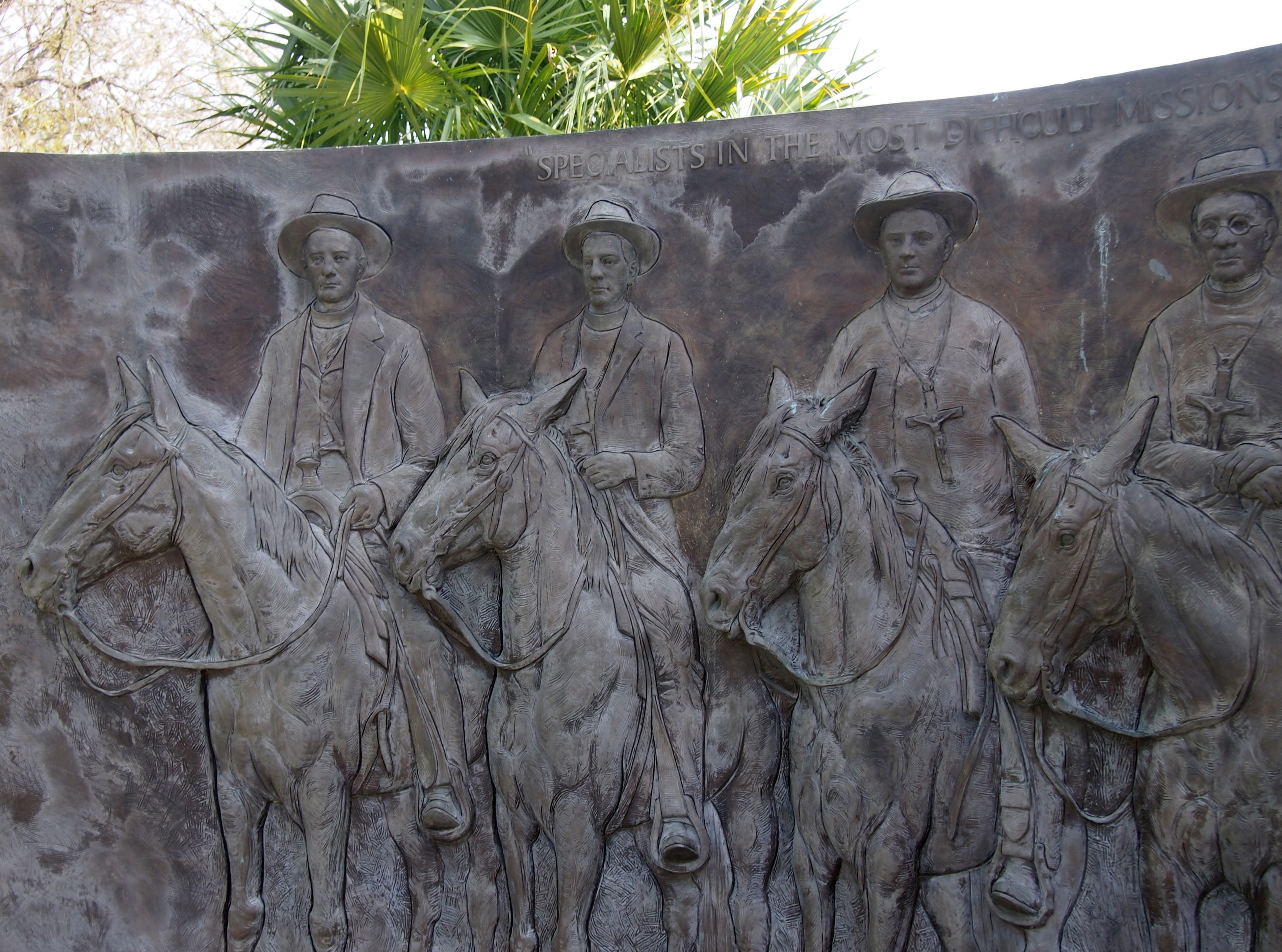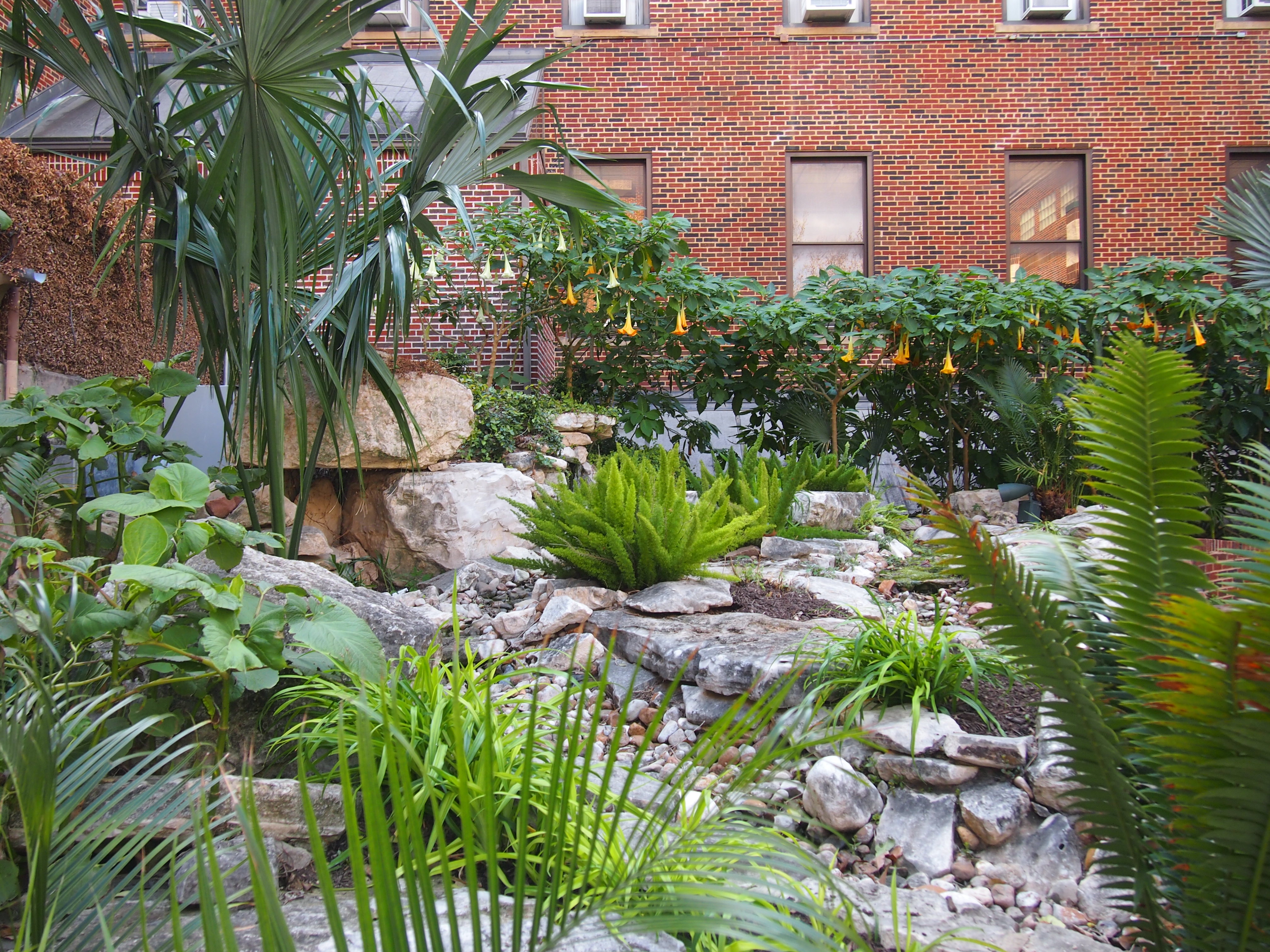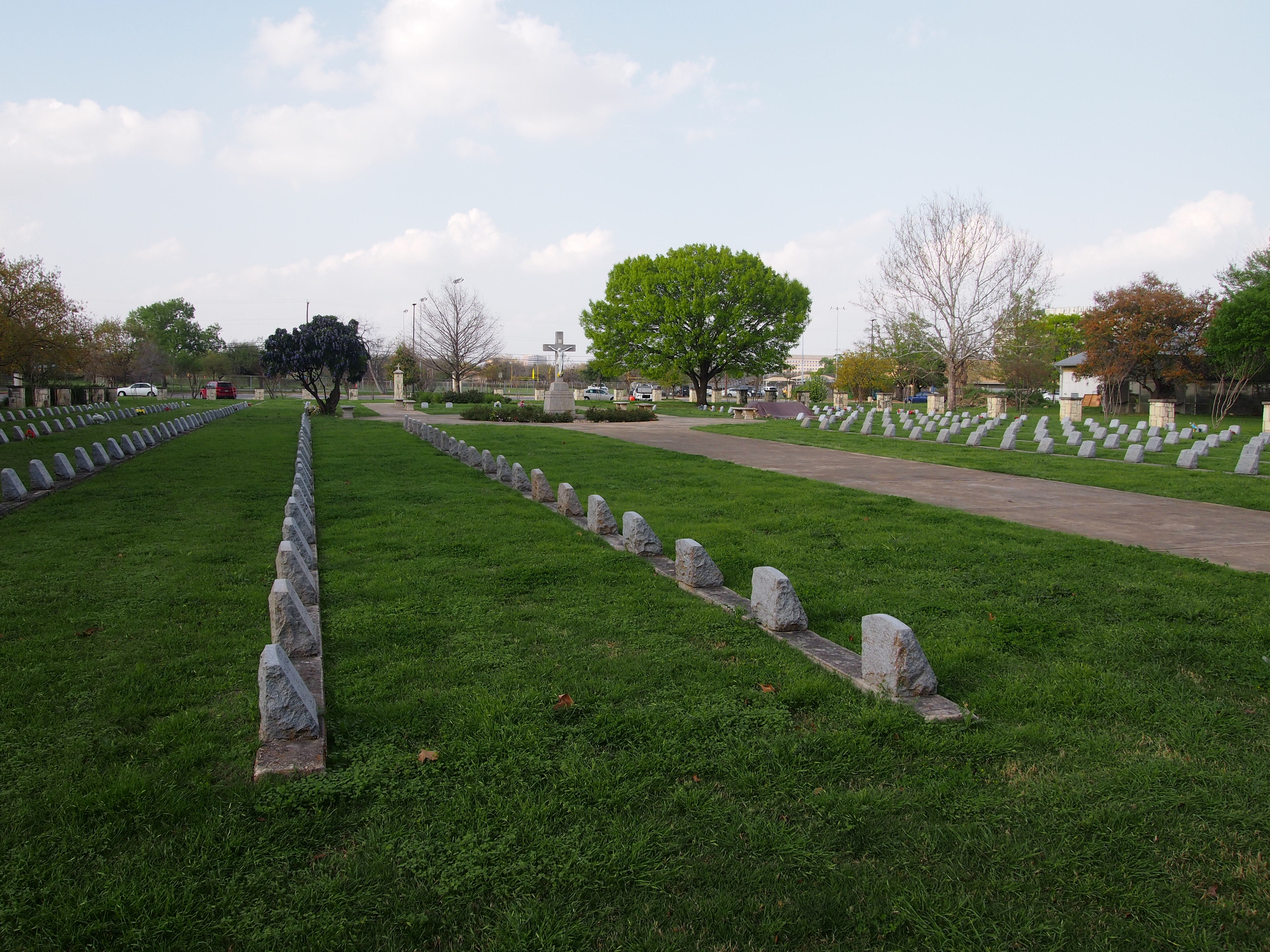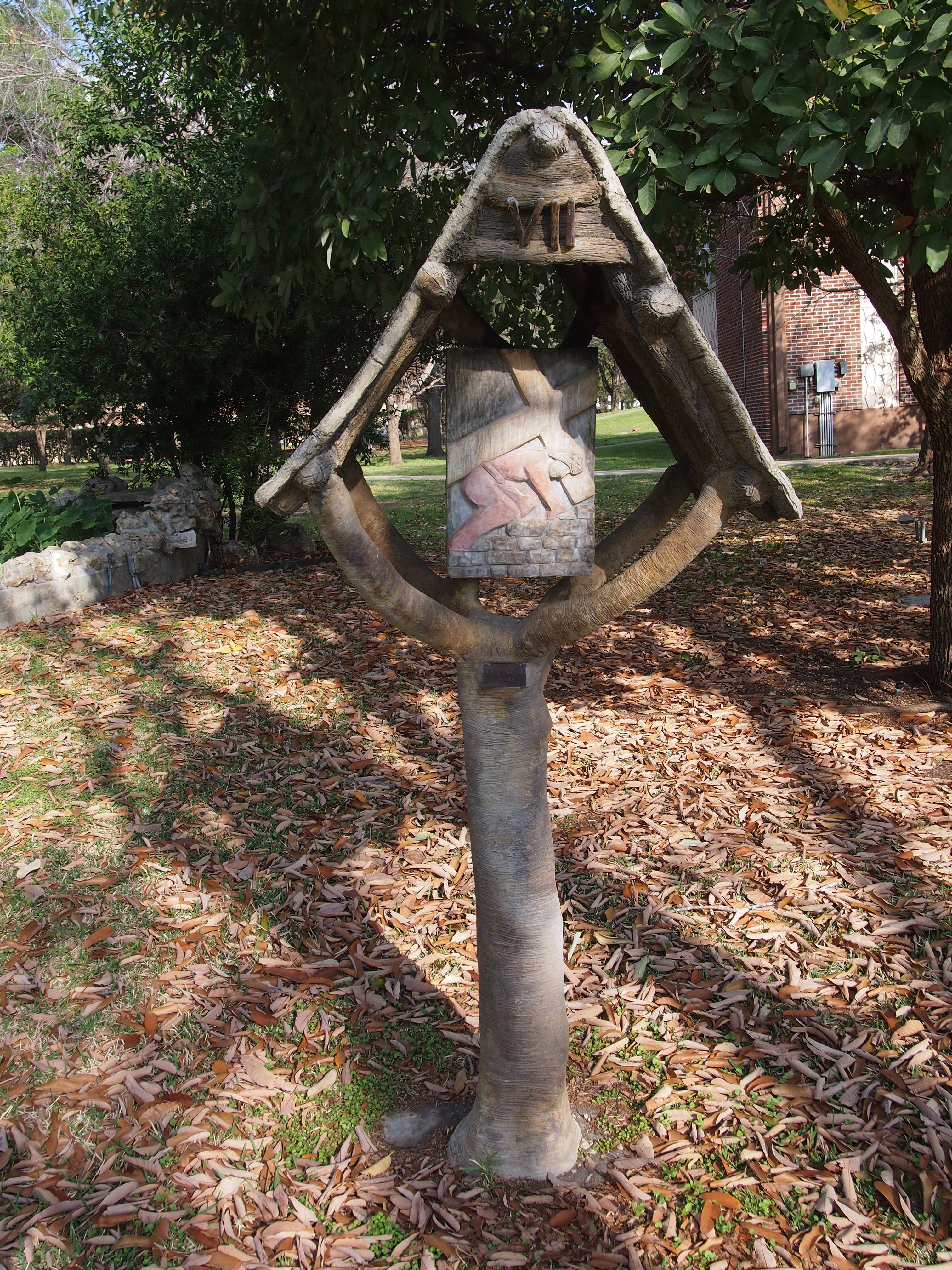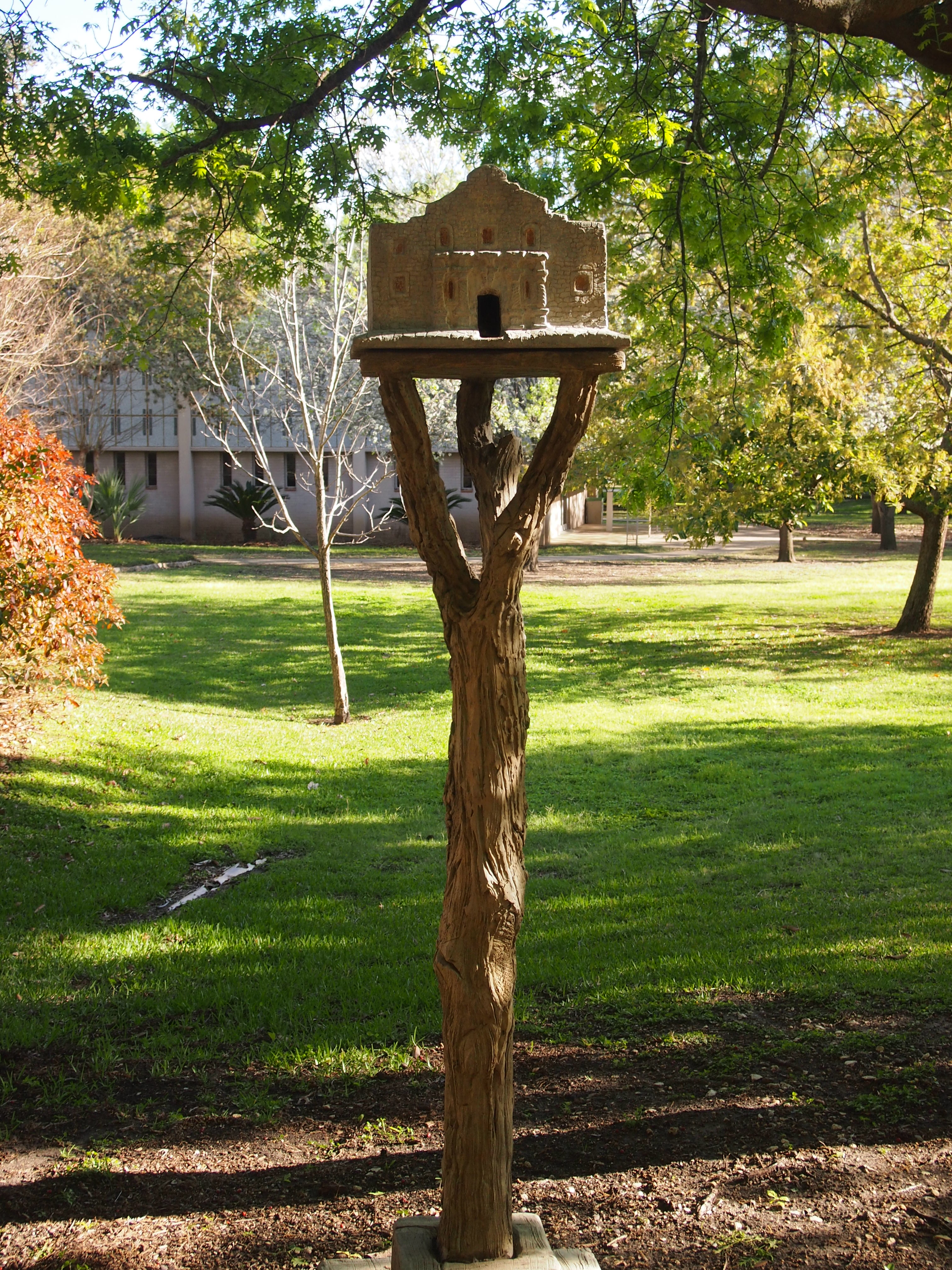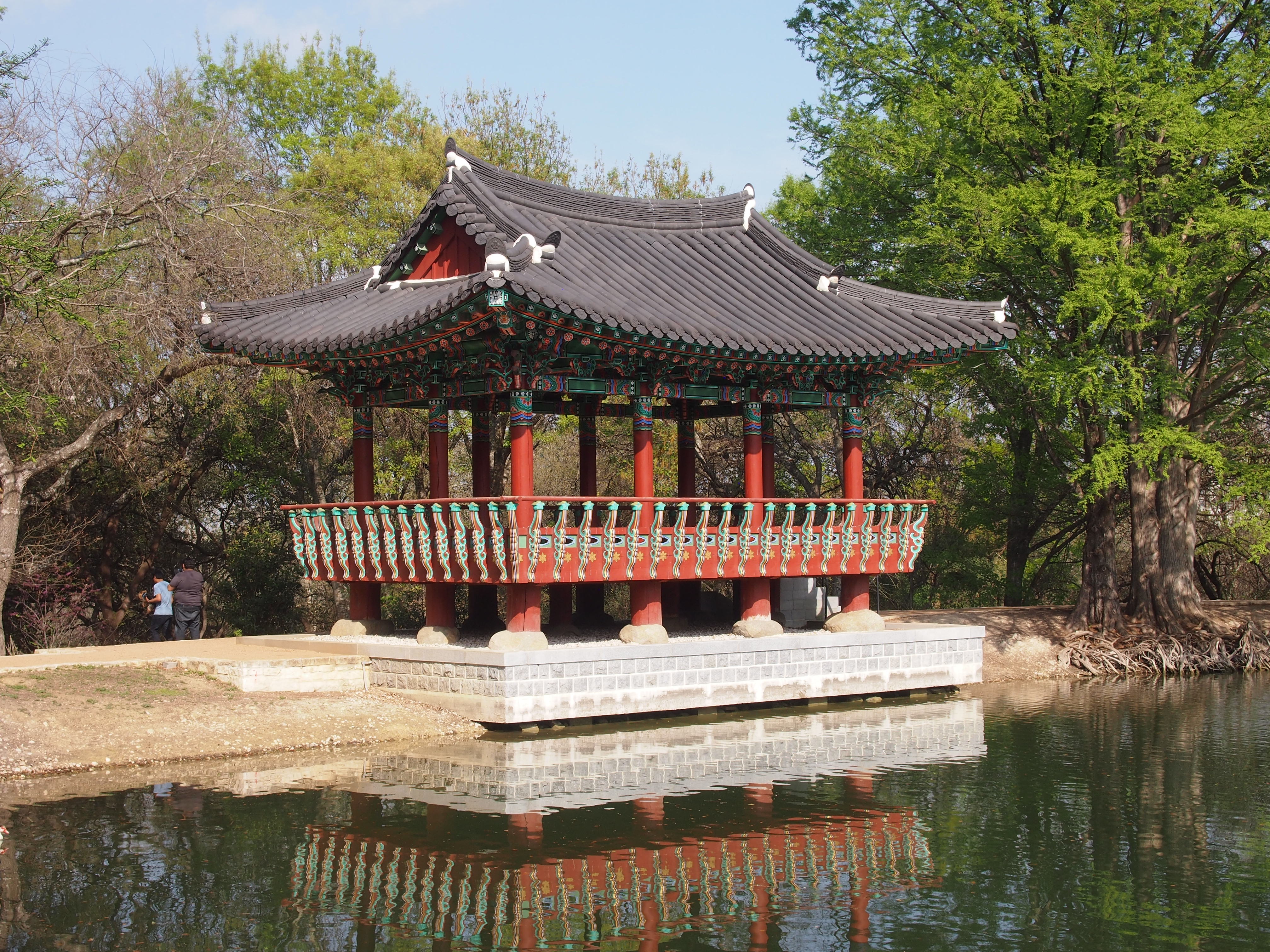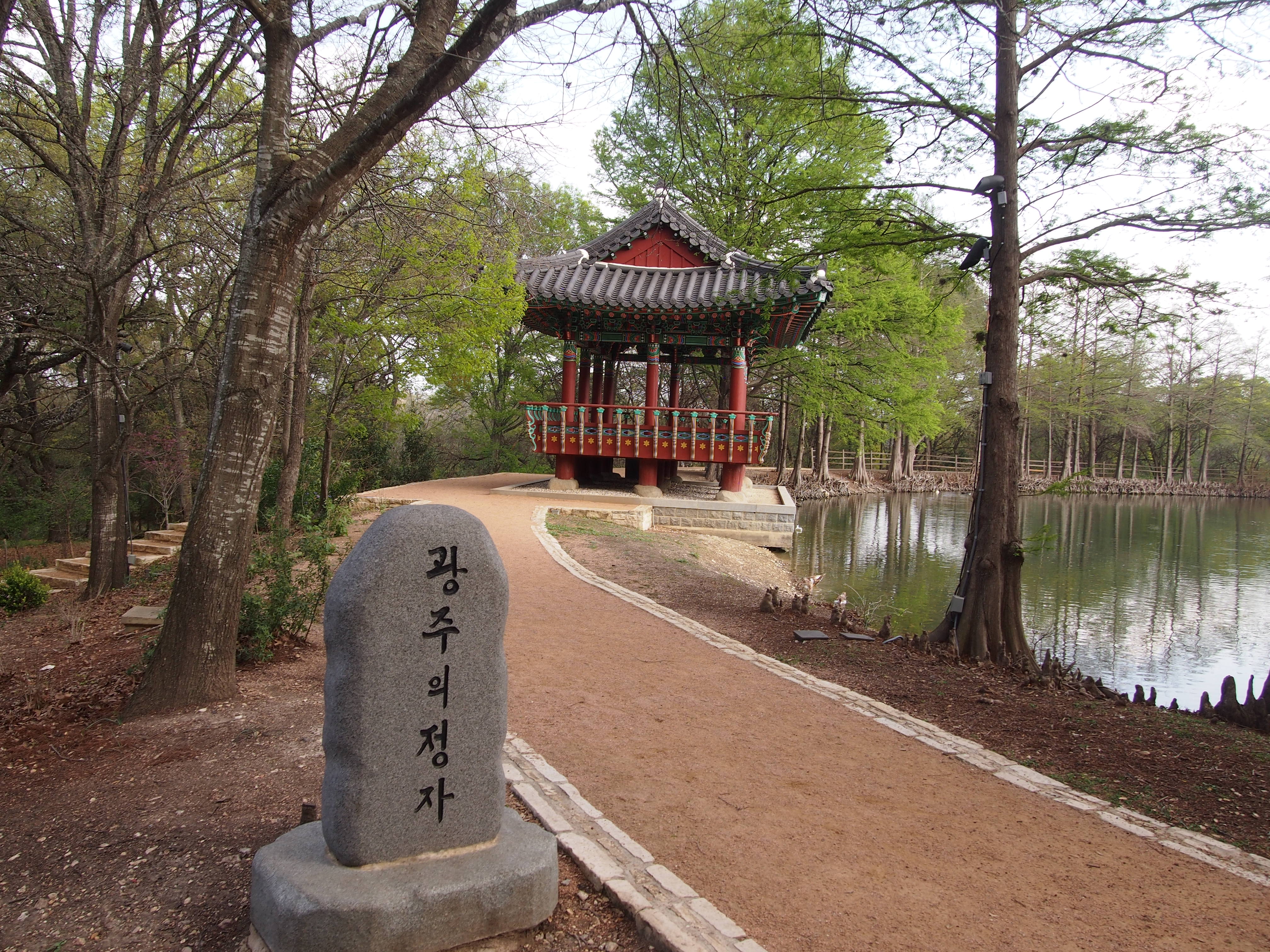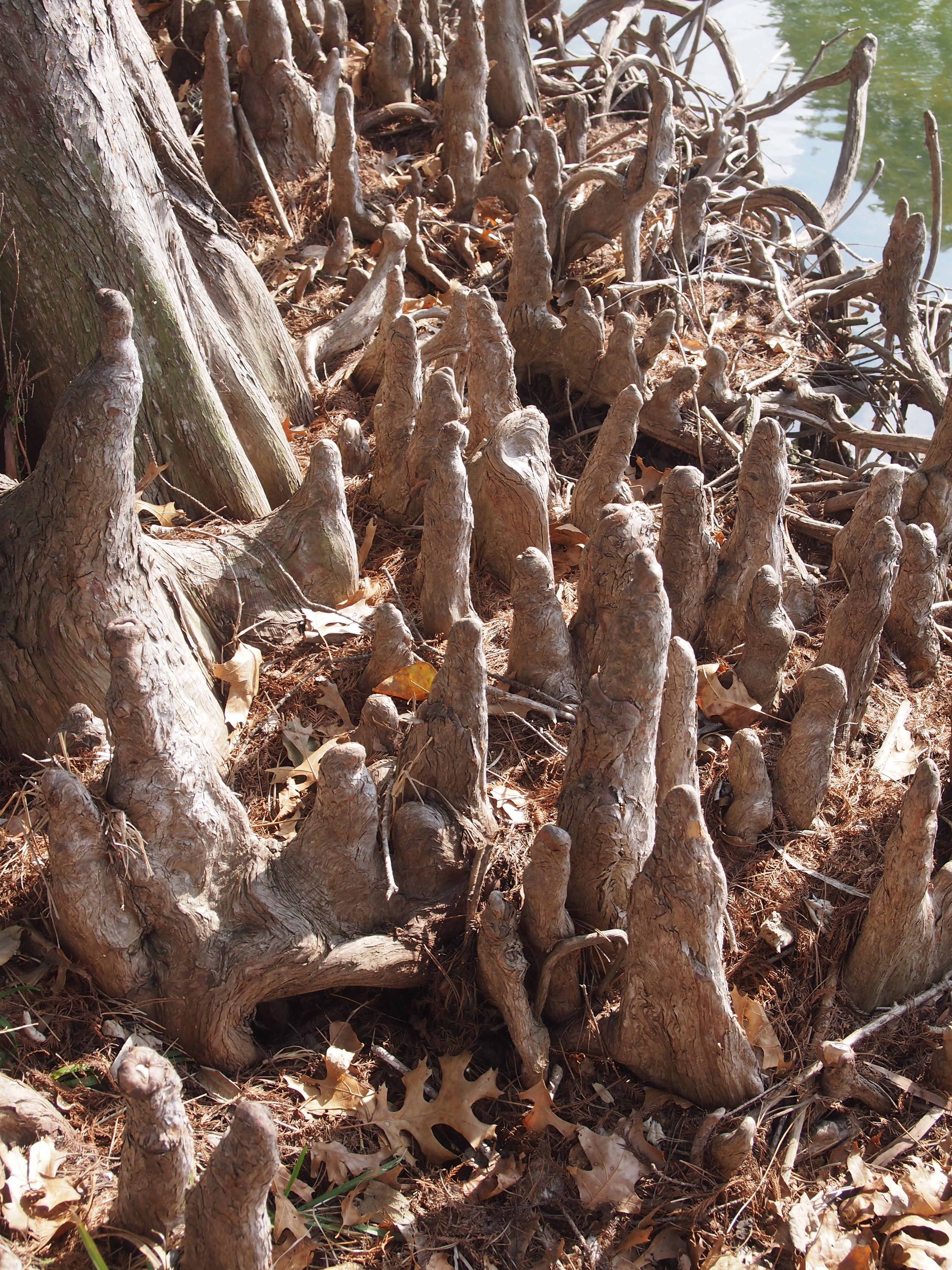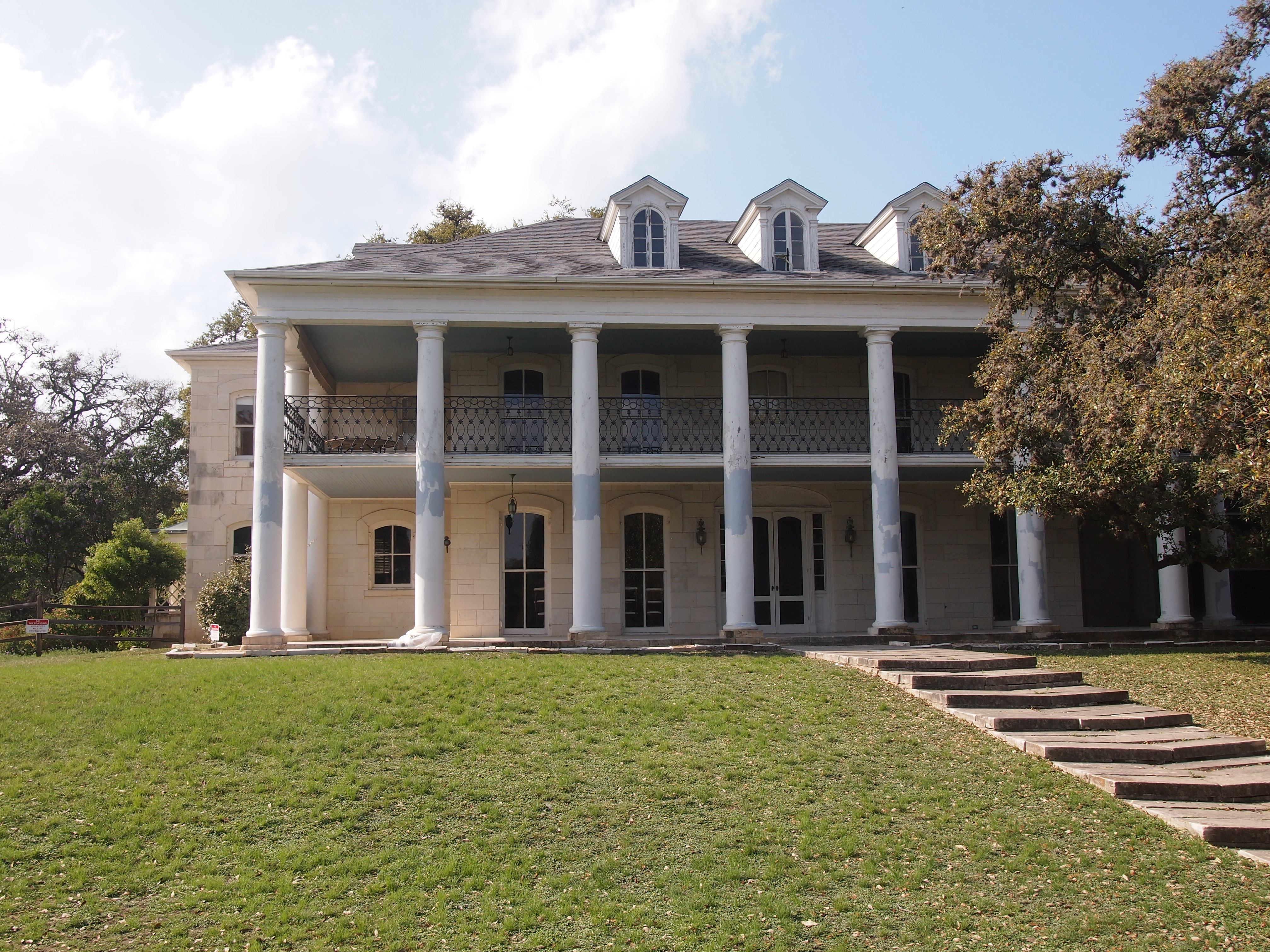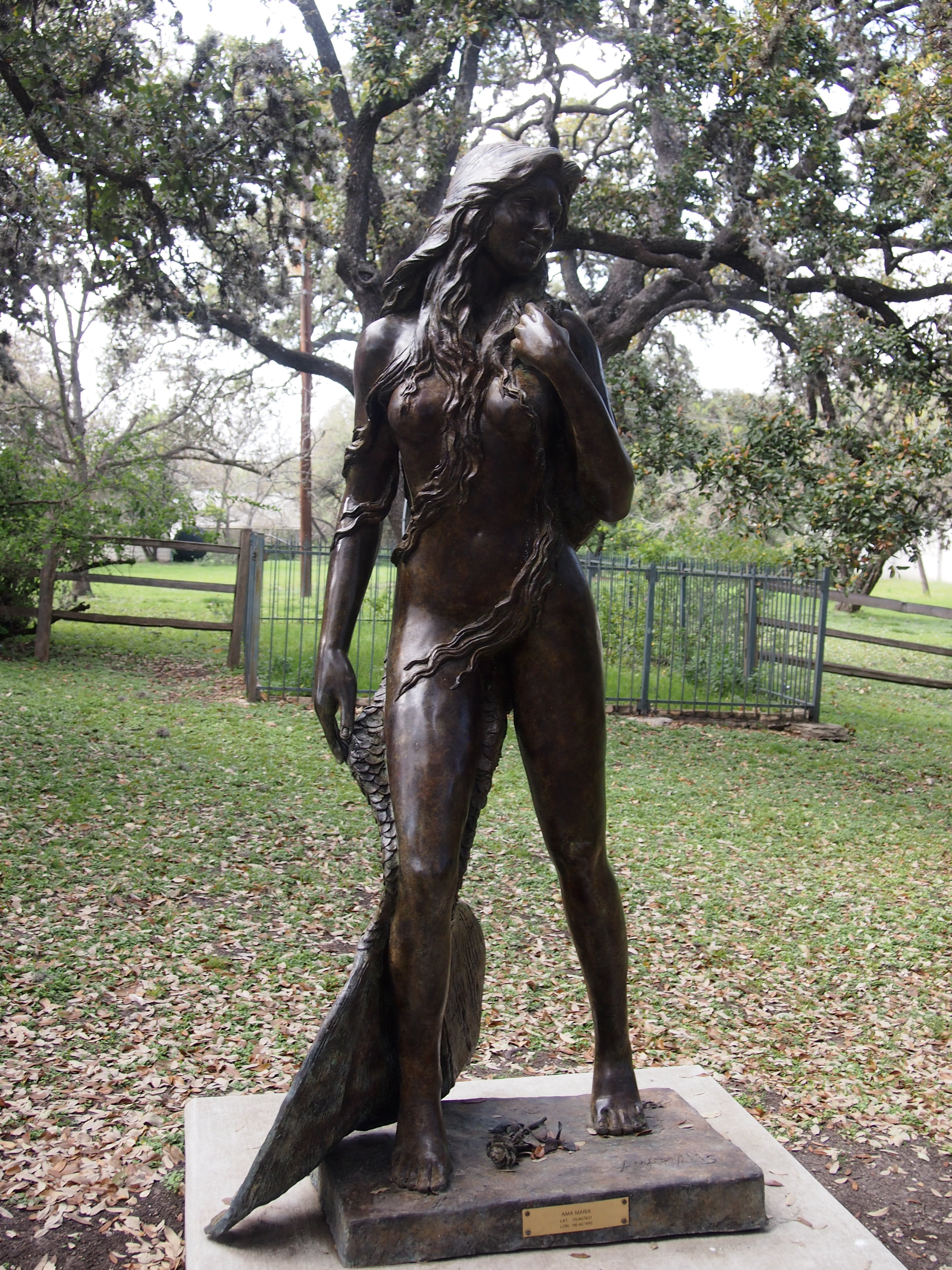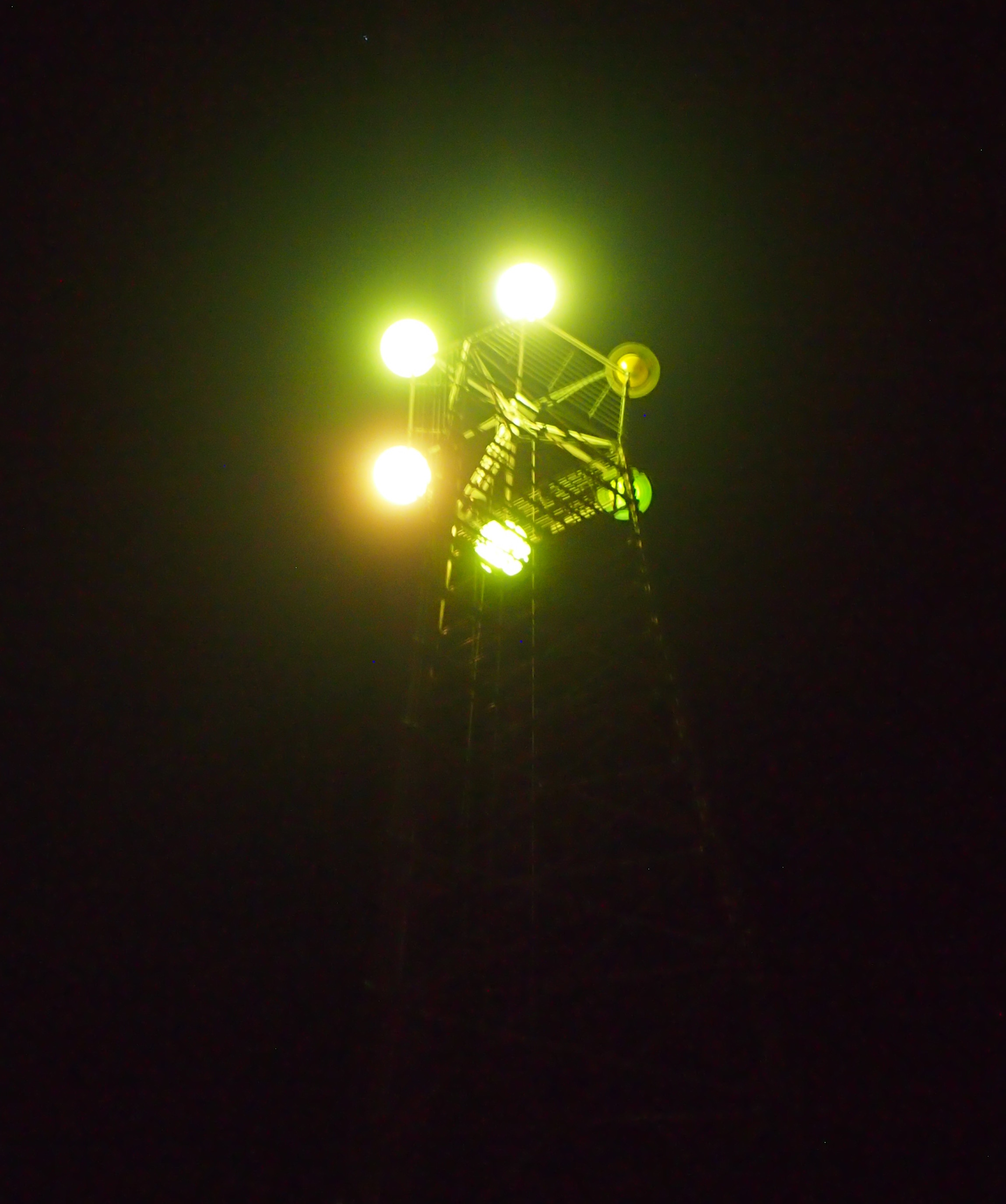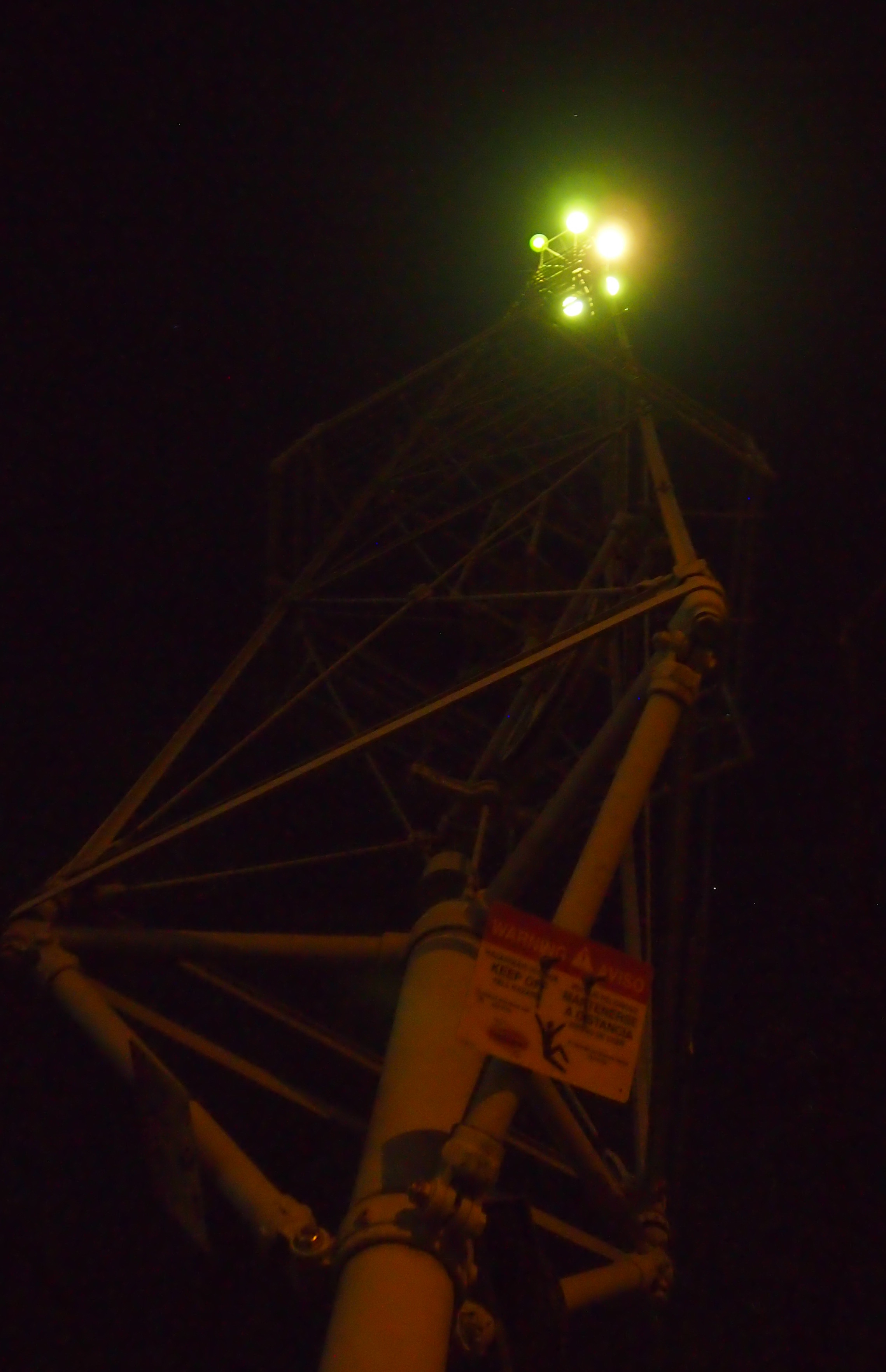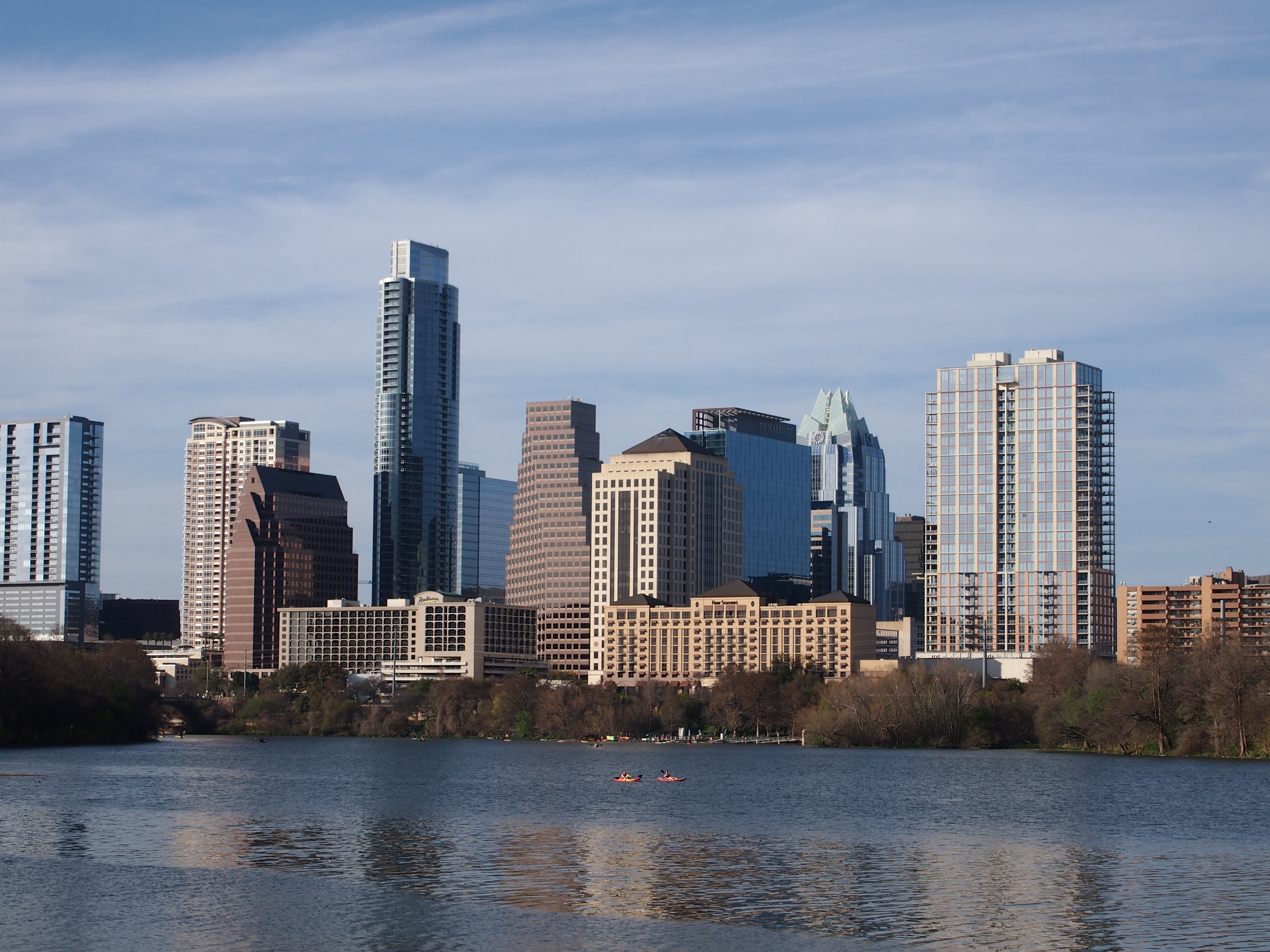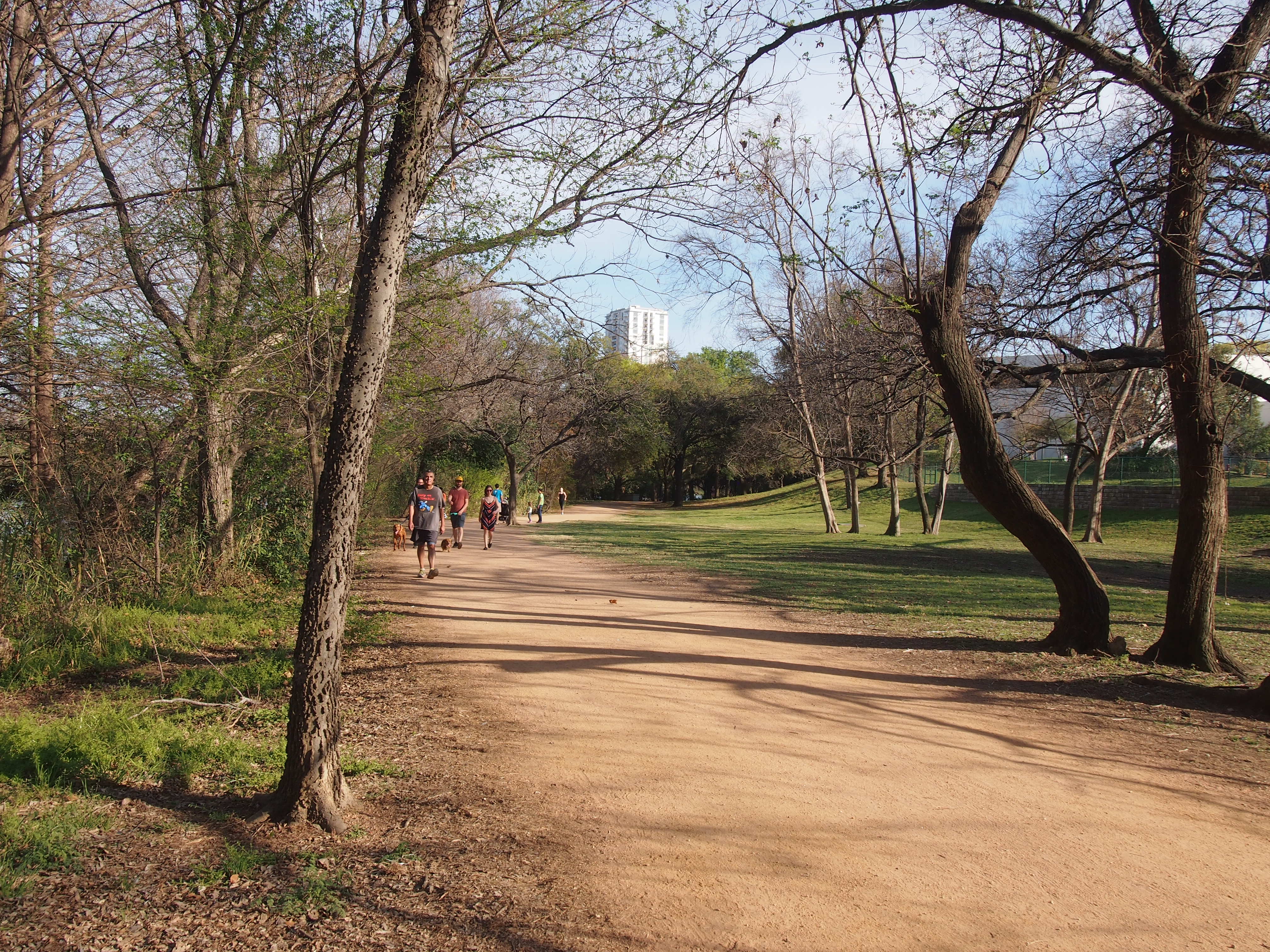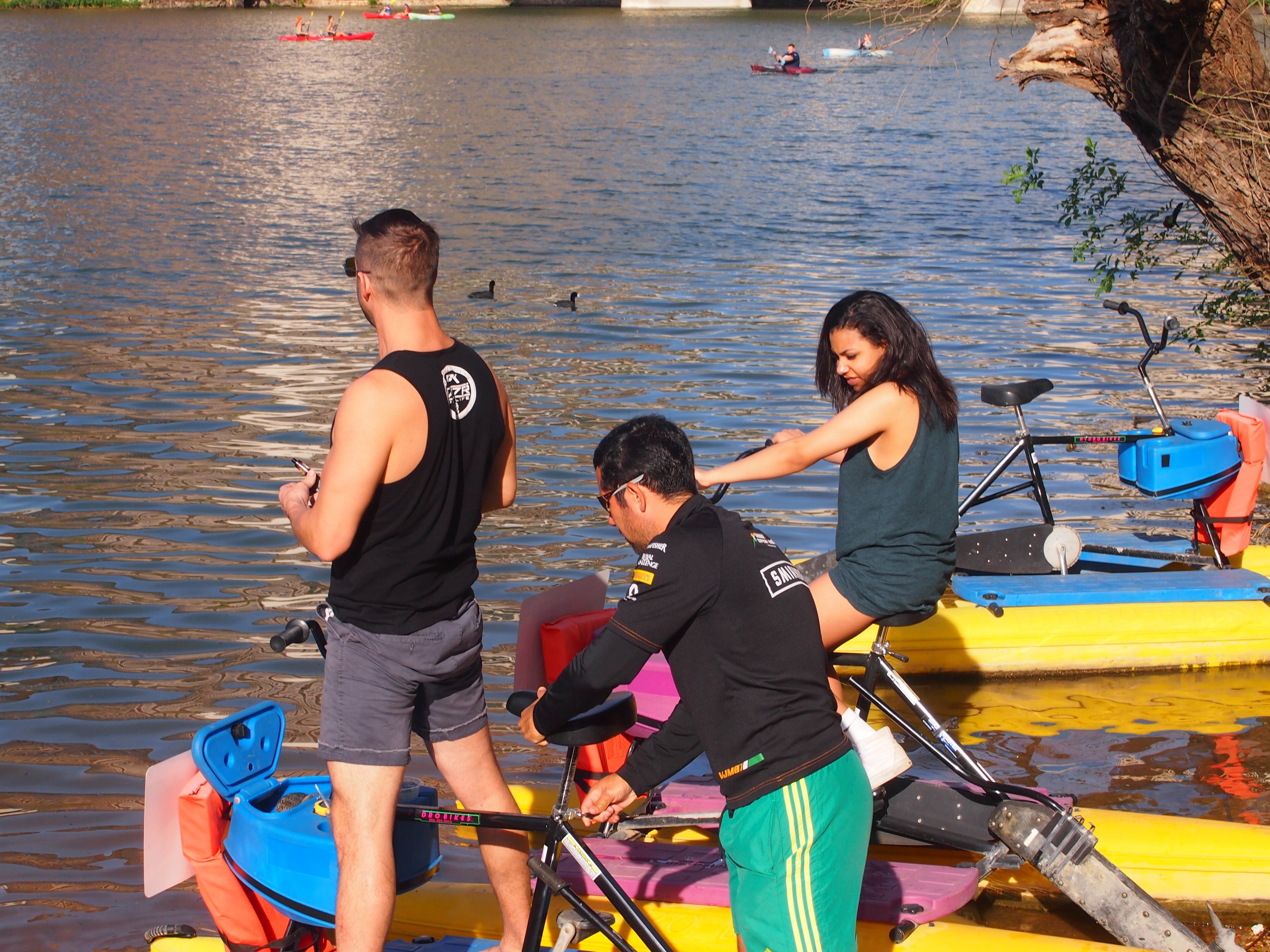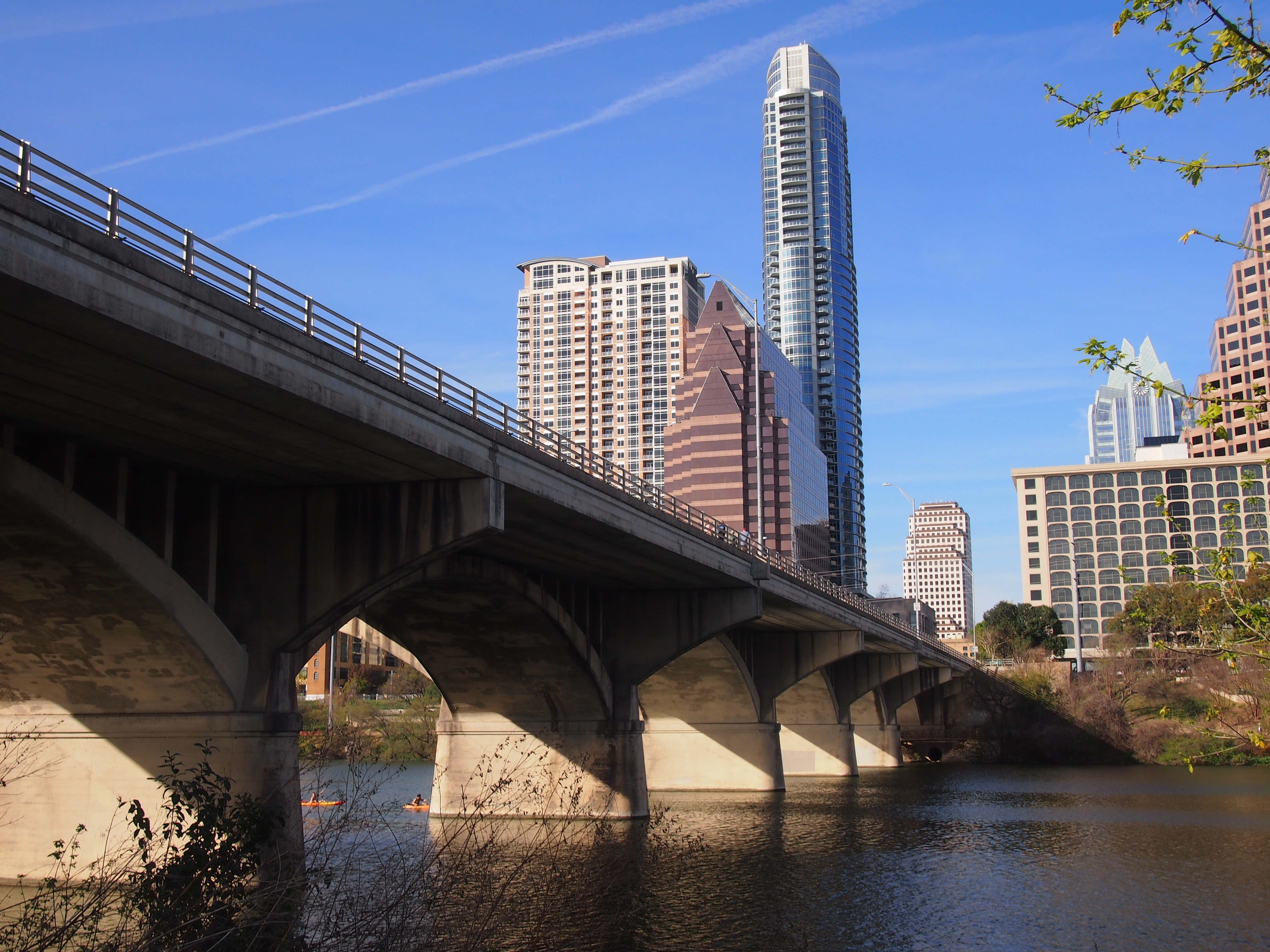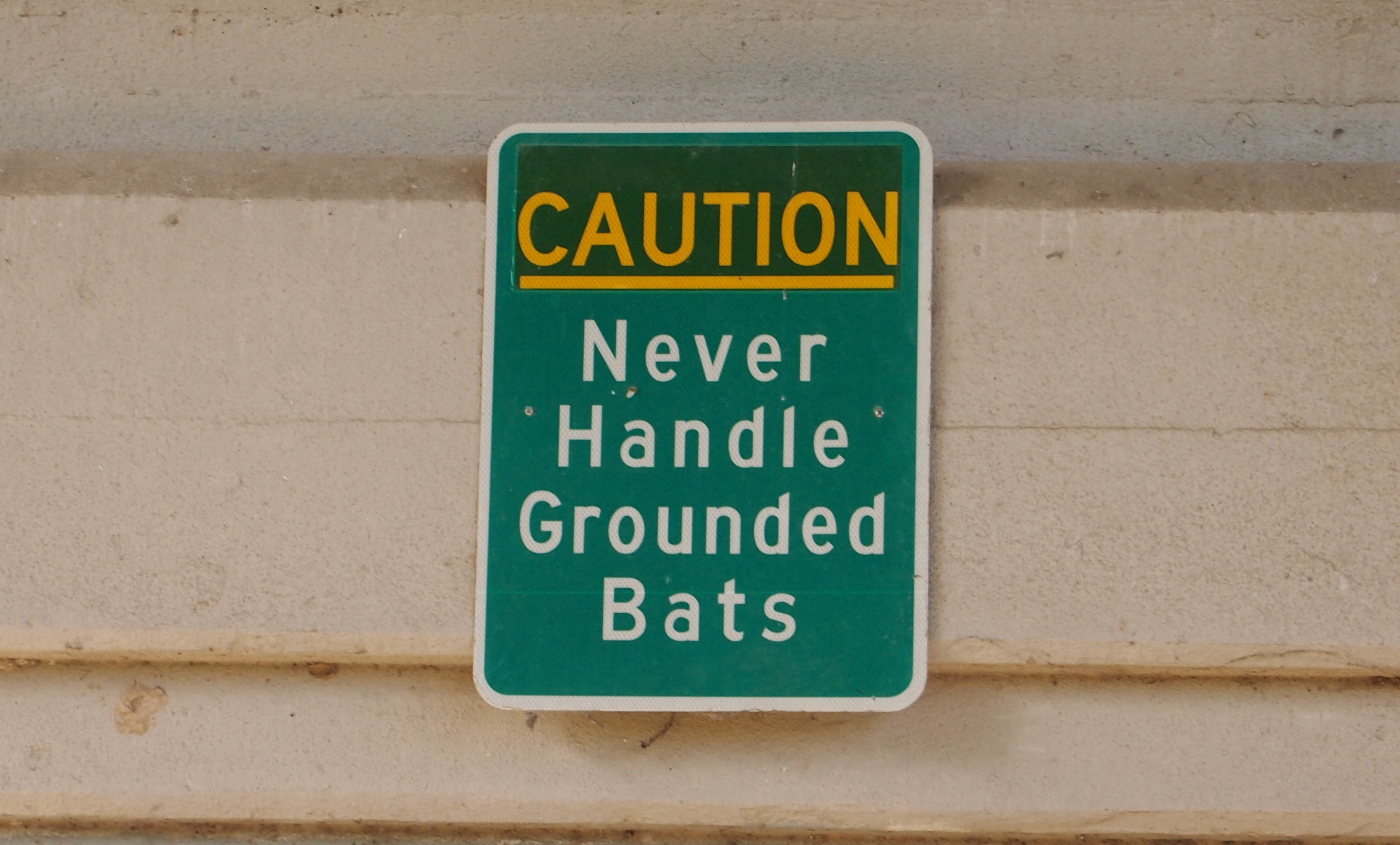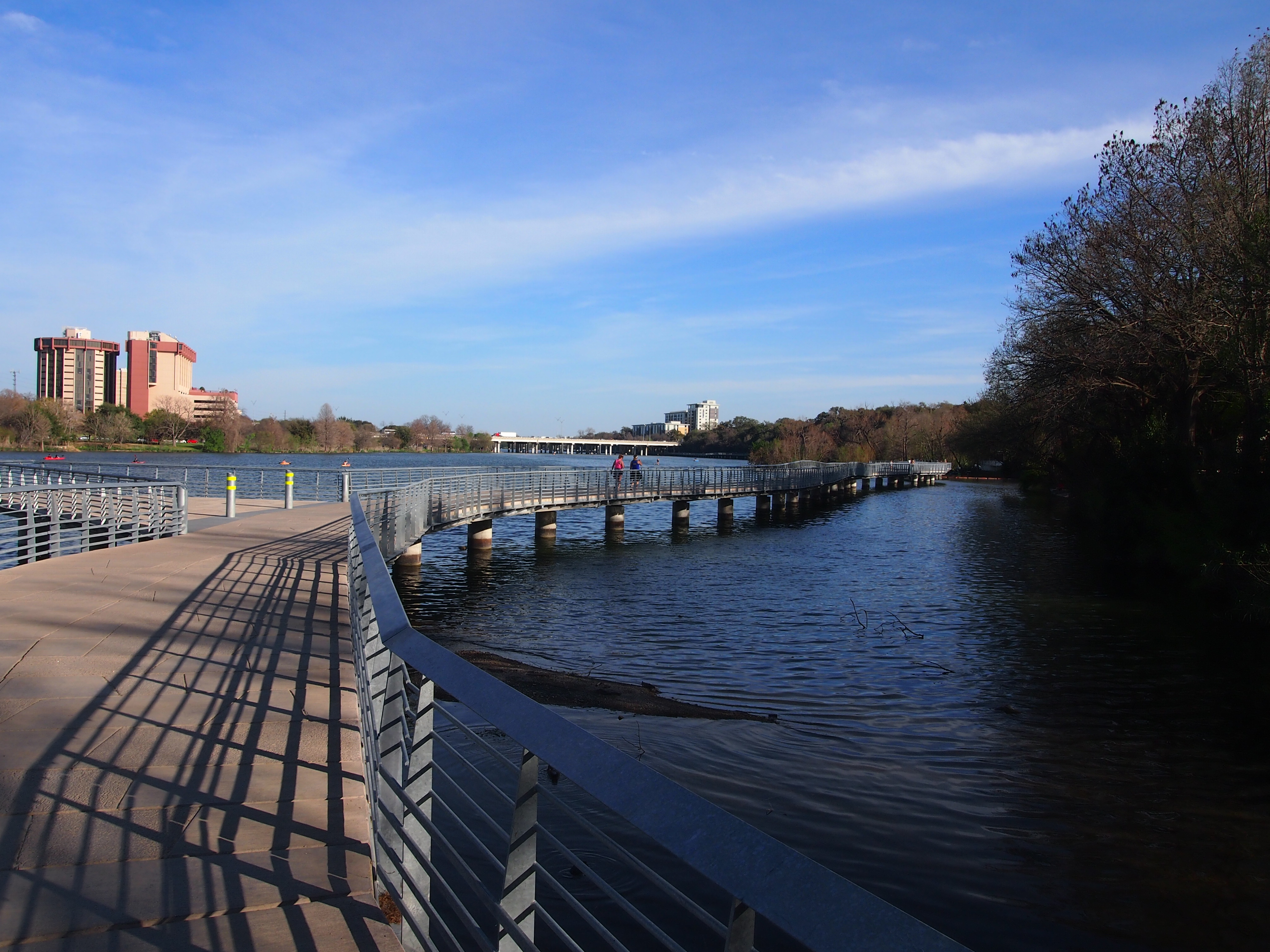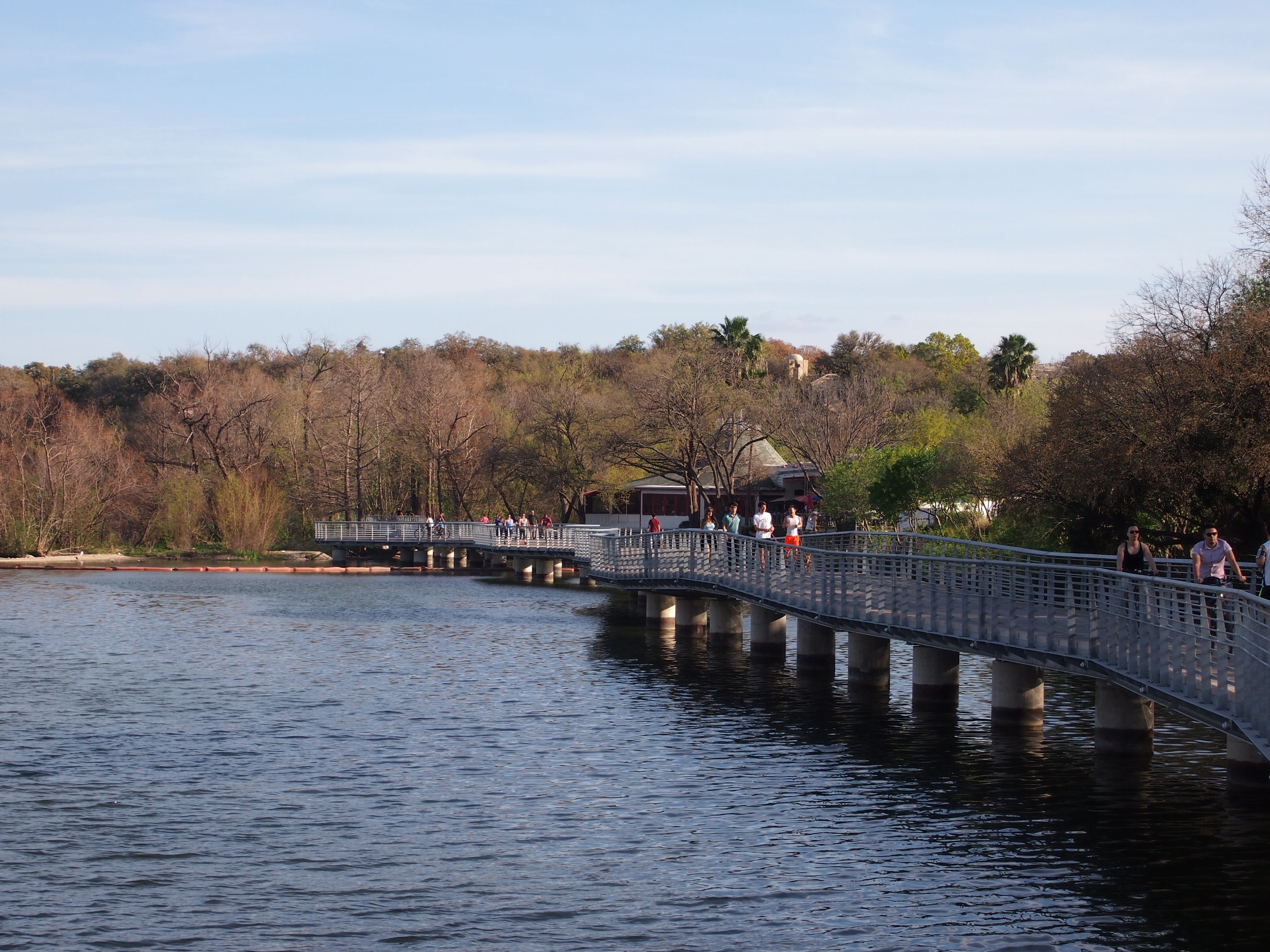Morbid curiosity inspired me to turn on the TV early yesterday afternoon to see a little live coverage from Cleveland. By complete chance I saw all of Scott Baio’s little speech. Later, I explained to Lilly who that was: “You know the concept of A-list celebrities, right? He’s a D-list celebrity.” Guess the Fonz isn’t in the Trump camp. He never did suffer bullies gladly.
I’m not the person to describe RTX 2016 in any coherent way. That’s because of my willful ignorance, something I disapprove of in many situations, but not when it comes to pop culture. The only sane reaction to pop culture is willful ignorance: pay attention to whatever interests you, roundly ignore the rest, which is most everything.
RTX stands for Rooster Teeth Expo. According to Rooster Teeth itself, “Rooster Teeth Productions is recognized as one of the world’s leading innovators in the field of entertainment production. Over the past 11 years, we have built a global community of highly engaged and dedicated viewers. From podcasts and gameplay videos to one of the fastest growing consumer shows in the U.S., Rooster Teeth continues to become a main hub for community, gaming & entertainment.”
Fine. Good for them. I’d still be wholly ignorant of them except that Ann is a viewer — how “engaged and dedicated,” I couldn’t say, but enough to tell me earlier this year that she wanted to go to RTX, which was in Austin (the company’s hometown) July 1-3. I probably surprised her when I told her attending the show could be part of a longer trip to Texas, and we’d time things to be in Austin on one of those days.
So on July 2, we found ourselves at the Austin Convention Center, site of RTX. I saw crowd scenes.

 The exhibit hall was remarkably like that of any other convention I’ve been to — rows and rows of booths featuring companies promoting themselves and their products. The difference being that almost all the products, including media productions and games and whatnot, were completely unfamiliar to me, and none of the attendees were wearing ties. But Ann knew a lot about the products, including many of the characters. All of these, for instance.
The exhibit hall was remarkably like that of any other convention I’ve been to — rows and rows of booths featuring companies promoting themselves and their products. The difference being that almost all the products, including media productions and games and whatnot, were completely unfamiliar to me, and none of the attendees were wearing ties. But Ann knew a lot about the products, including many of the characters. All of these, for instance.


 She told me who the girl in bird feathers was supposed to be, but I’ve forgotten. I will give the various cosplayers I saw points for effort. Some of the costumes looked like a lot of work.
She told me who the girl in bird feathers was supposed to be, but I’ve forgotten. I will give the various cosplayers I saw points for effort. Some of the costumes looked like a lot of work.
Toward mid-day, we watched a panel discussion featuring the top guy at Rooster Teeth and some of his top creatives. They filled a ballroom with a few thousand people. At the beginning, they screened a brand-new episode, if that’s the right word, of an online show called “A Million Dollars, But…” The conceit of the show is that you can have a million dollars, but you have to put up with some onerous, and frankly magical, condition (and not, say, paying high taxes on it).
Let’s call it juvenile entertainment. A few of the bits in the episode were funny, but hearing about how it’s put together strained my patience. I’m not the intended audience anyway. But I have to note that not all of the audience were kids — not in the chronological sense. I’d put most of the attendees in their early to mid-20s.
We also attended a performance by a couple of singers, a man and a woman. They were reasonably talented and did songs from various shows, mostly Internet-based (I think). Ann seemed to know most of the tunes. I knew none of them. Time flies, new things happen. Toward the end, the man said, “We always close with a song I’m sure virtually all of you know.”
Then they launched into a song I didn’t know. Turned out to be the theme from Pokemon. Of course I’ve heard of that cartoon. It would take more than willful ignorance to keep from hearing of it, even before Pokemon Go became the goldfish swallowing of the summer of ’16. But the theme? Somehow I never bothered with hearing it, certainly not enough to know it. Ann expressed some astonishment at this.
The last event we attended was a cosplay costume contest. Participants strolled from the back to the front of one of the meeting rooms, showing themselves off as they went up the center aisle. The moderators announced who they were, and who their costumes represented. I actually had heard of a few of them, such as one of the iterations of Batman and Luigi, the brother of Mario, though as far as I’m concerned, Mario Bros. is just an arcade game I never played much.
I was struck by the fact that the participants mostly weren’t interested in playing characters from Star Trek or Star Wars or other such longstanding and well-worn tales. They wanted newer characters. That’s probably a good thing.
If I remember right, this fellow was best in show. I don’t know who he’s supposed to be, but it’s an impressive outfit all the same. Mostly Styrofoam, from the looks of it.
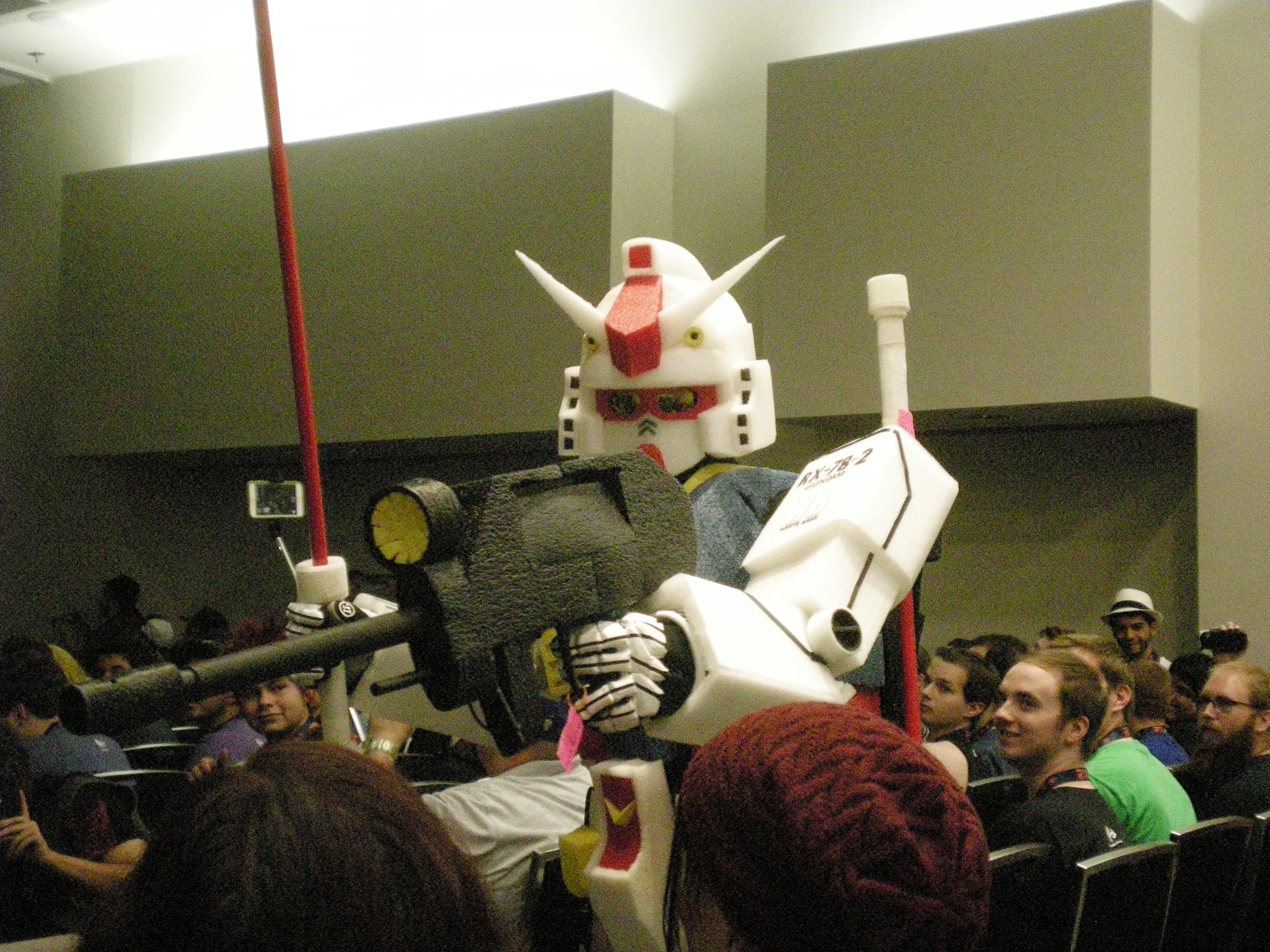
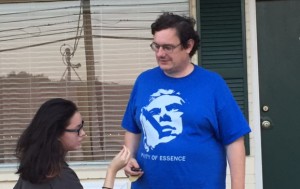 I wore my Gen. Jack D. Ripper PURITY OF ESSENCE t-shirt to the event. I figured he, too, is a fictional character of some import, even if only to earlier generations. As I suspected, I got no reaction to it, not even many quizzical looks, until just before we left the event. We were walking down the main corridor of the convention center, when suddenly a young man walking the other way said, Wow! right at me.
I wore my Gen. Jack D. Ripper PURITY OF ESSENCE t-shirt to the event. I figured he, too, is a fictional character of some import, even if only to earlier generations. As I suspected, I got no reaction to it, not even many quizzical looks, until just before we left the event. We were walking down the main corridor of the convention center, when suddenly a young man walking the other way said, Wow! right at me.
I was startled, but he quickly explained: “Where did you get that shirt? I spent the last two years of high school quoting Dr. Strangelove all the time.” Good to know that that movie isn’t completely lost on youth. I told him I didn’t remember the exact name of the web site where I bought it, but that the shirt should be easy enough to Google. As indeed it is.
Finally, there was this performer, BE INCREDIBLE.
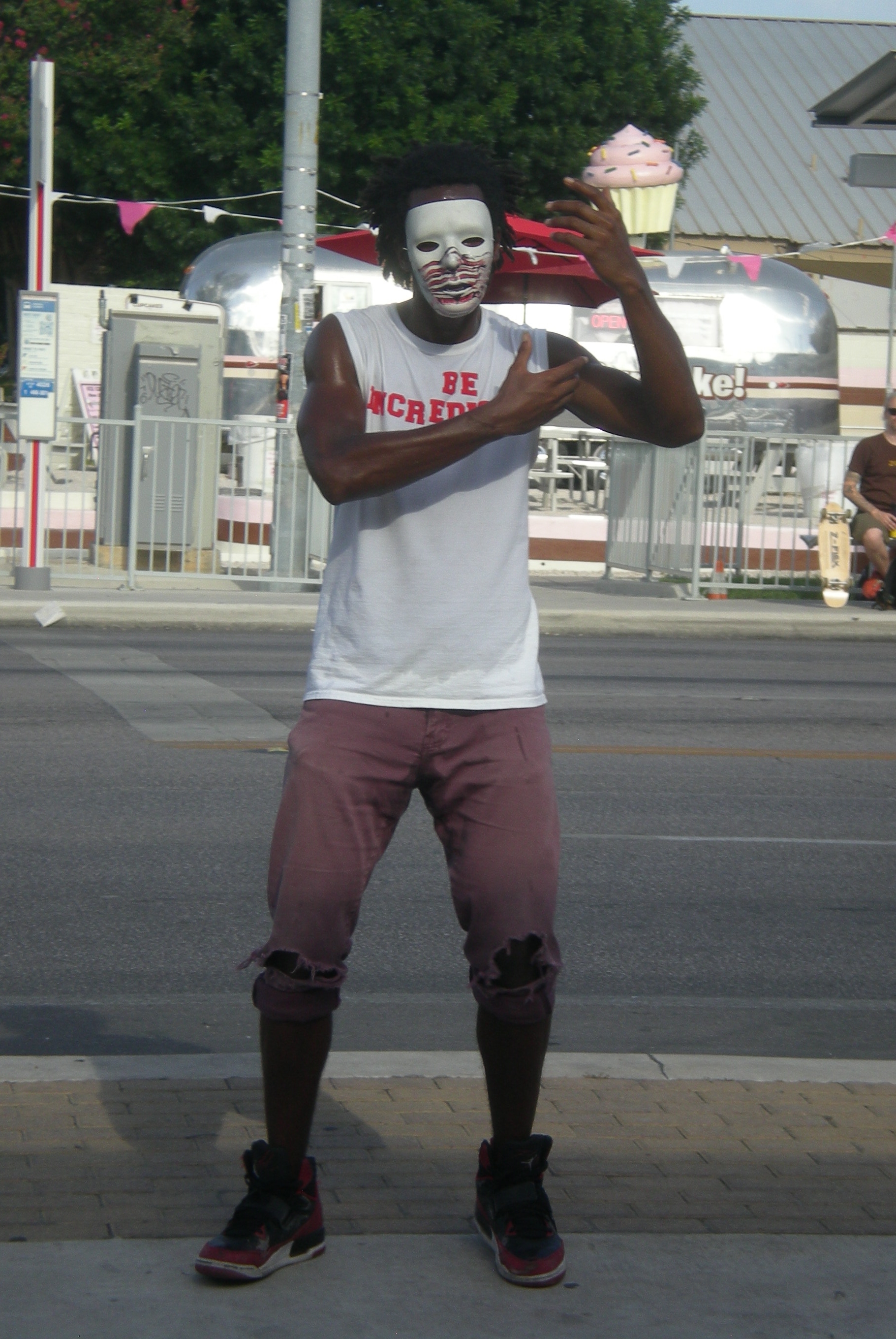 Actually, he had nothing to do with RTX. We took a bus to and from the event, and when we returned, the bus let us off on South Congress a few blocks north of the Austin Motel — and there he was, busking.
Actually, he had nothing to do with RTX. We took a bus to and from the event, and when we returned, the bus let us off on South Congress a few blocks north of the Austin Motel — and there he was, busking.
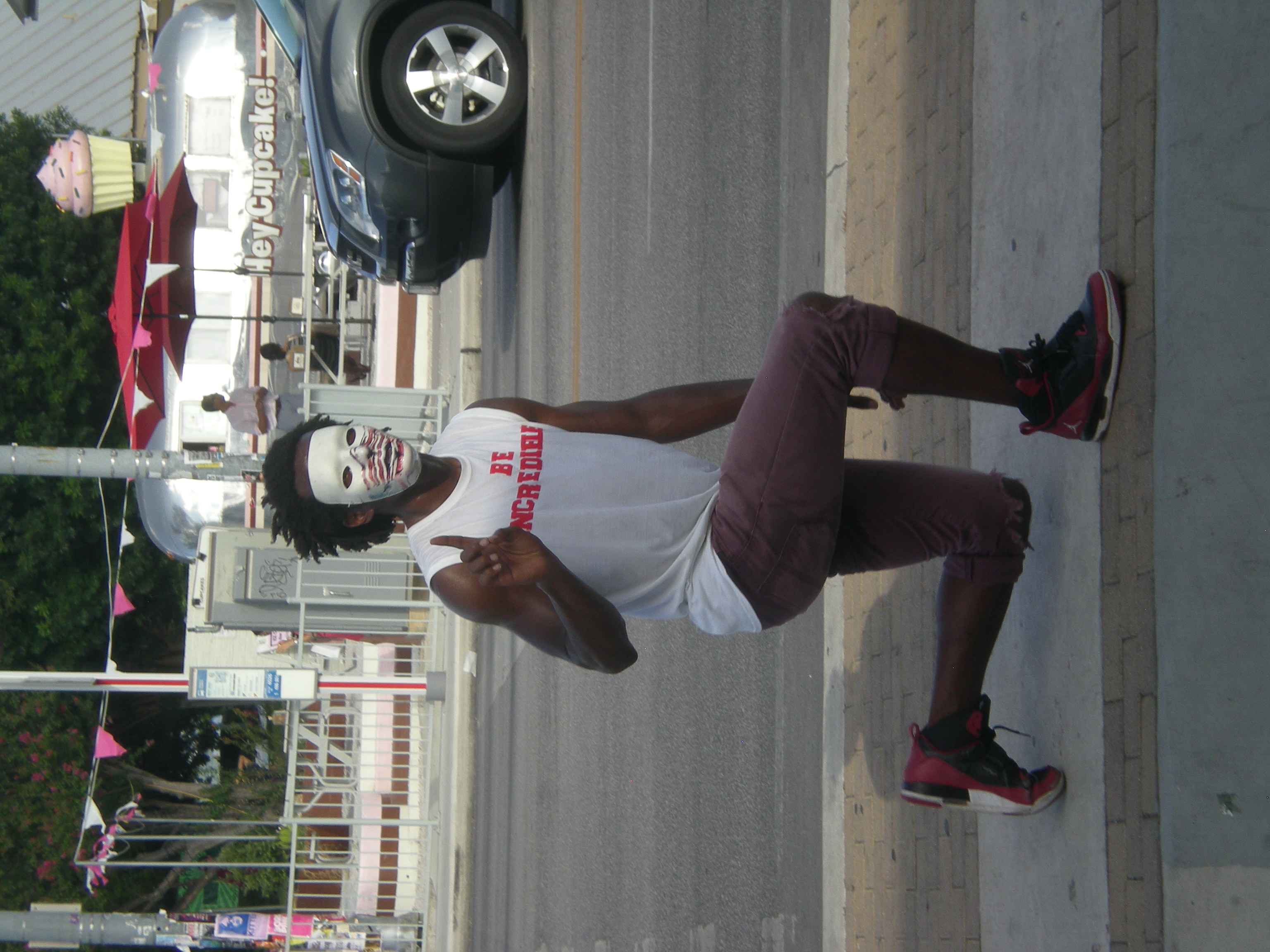 Maybe not incredible, but he had some good moves. I put a dollar coin in his bucket.
Maybe not incredible, but he had some good moves. I put a dollar coin in his bucket.
